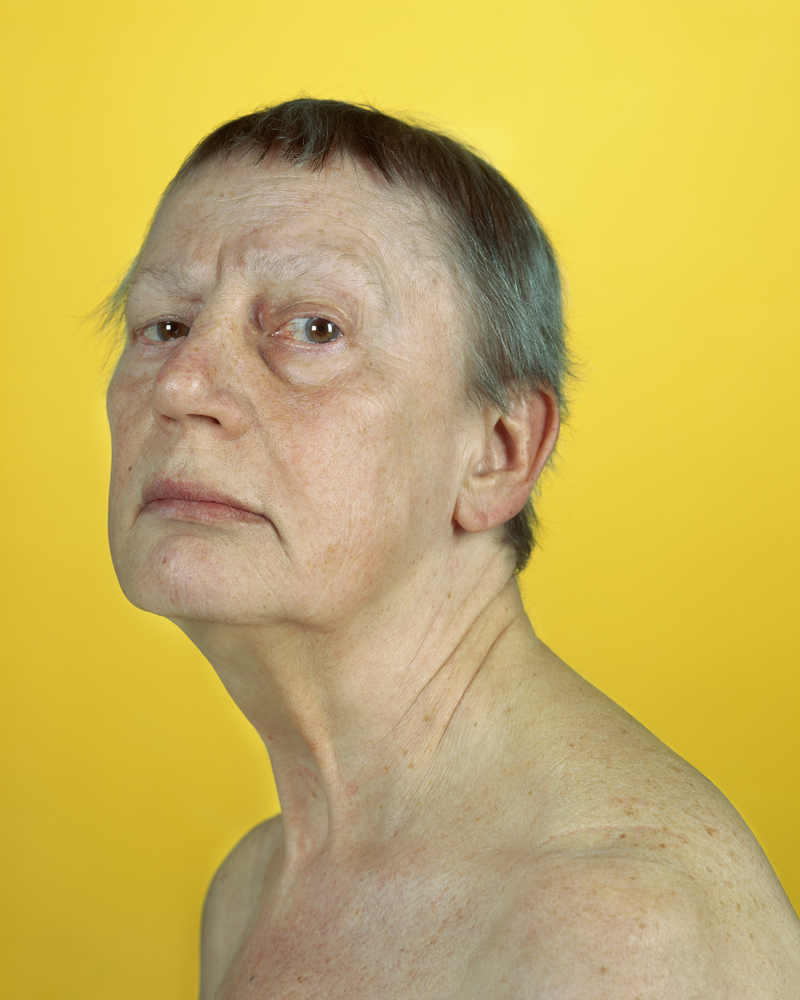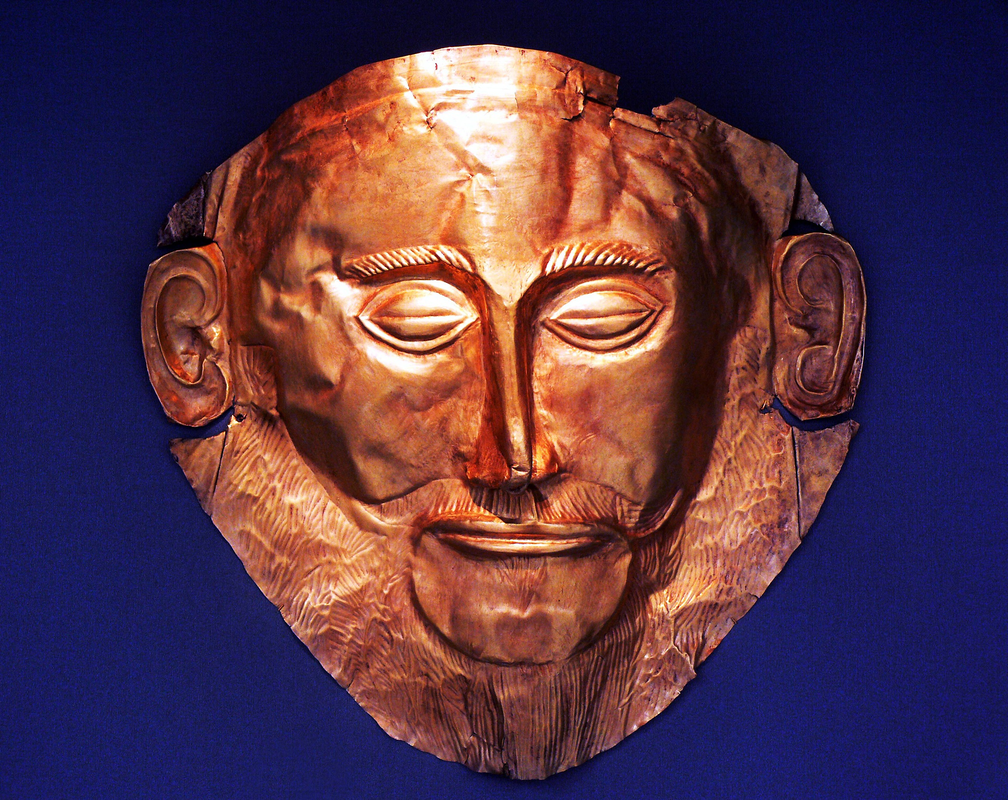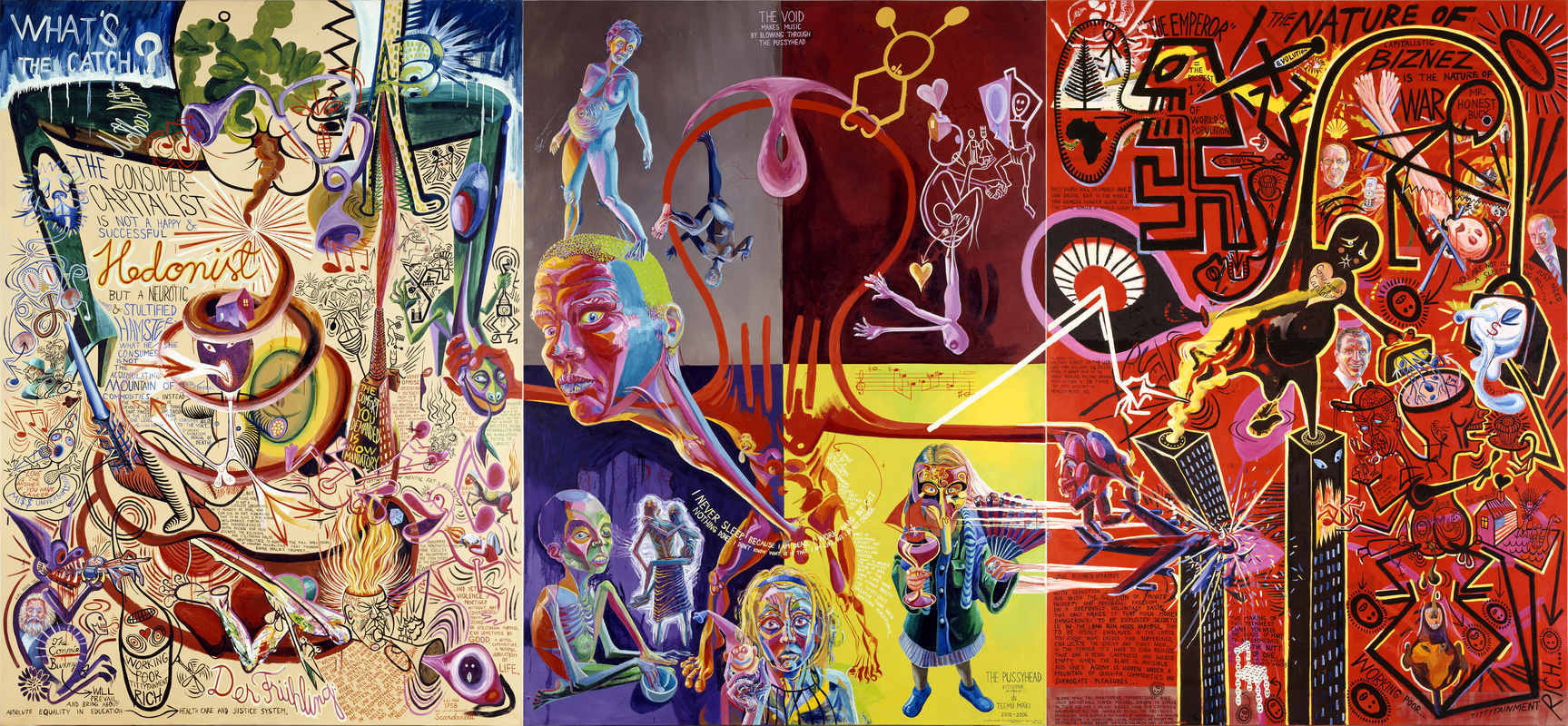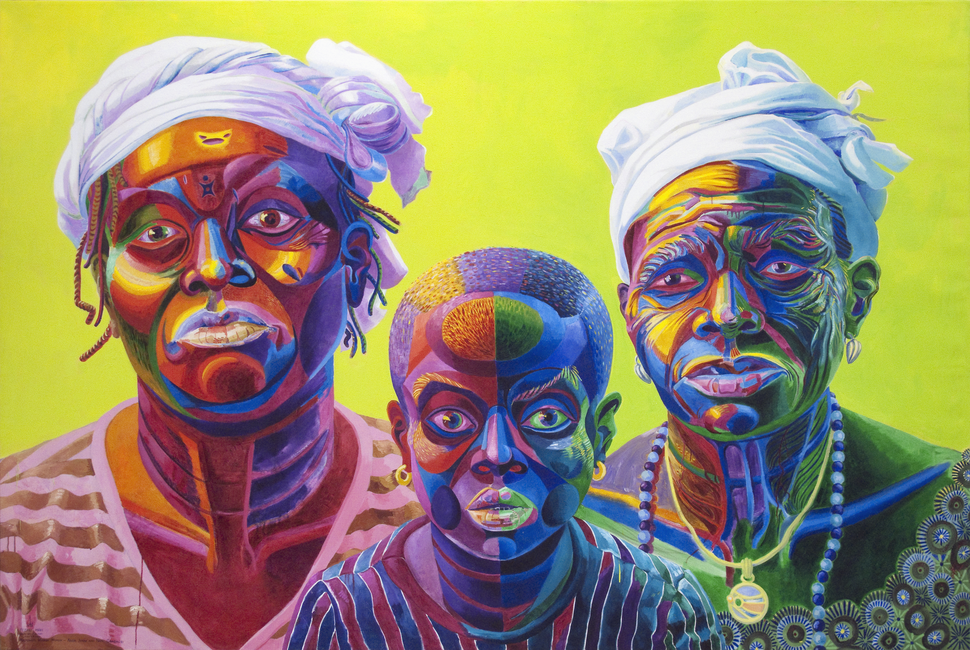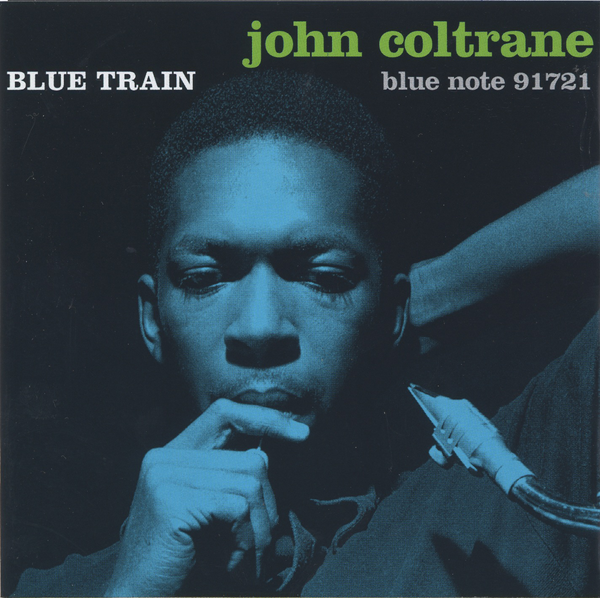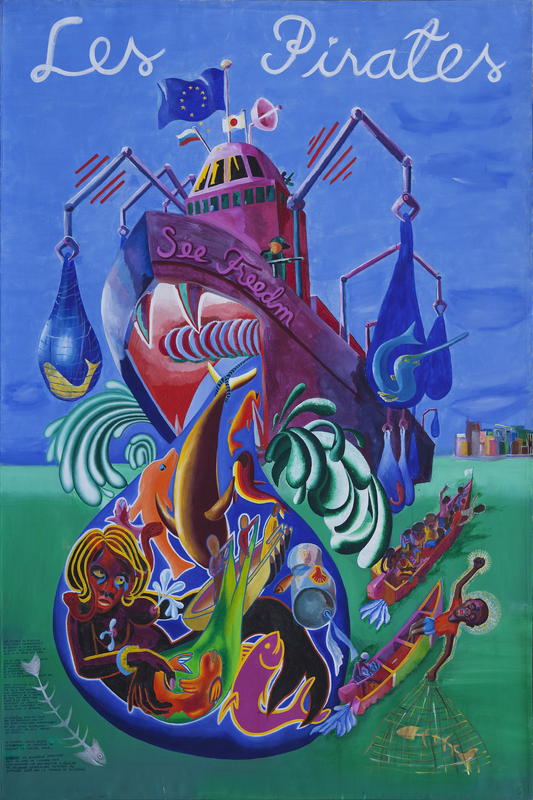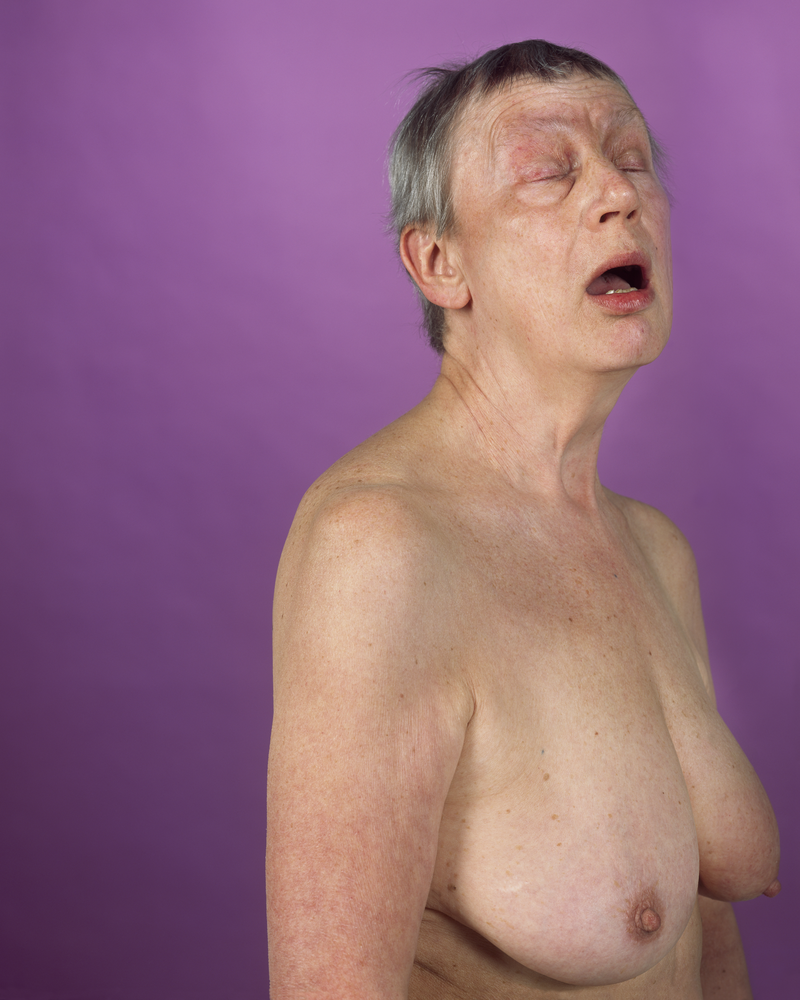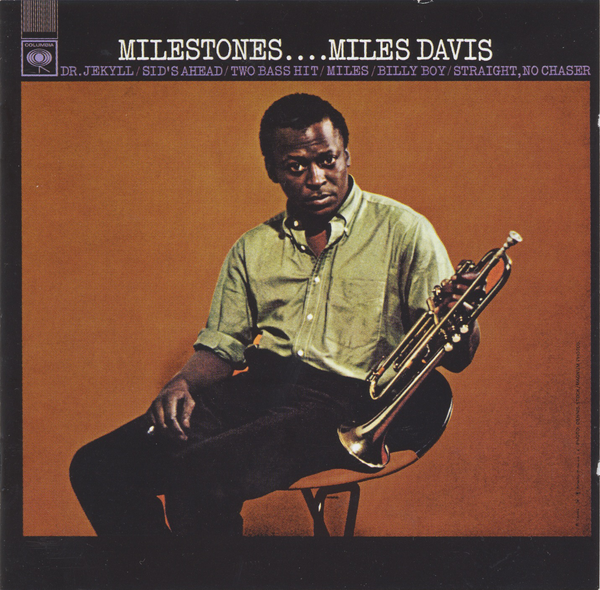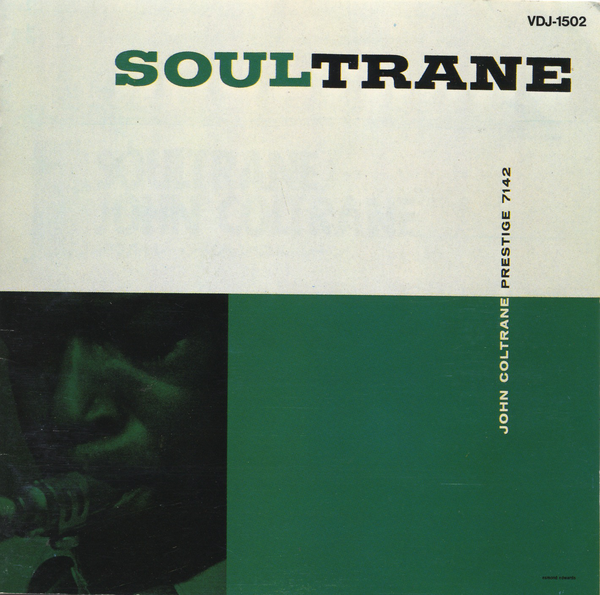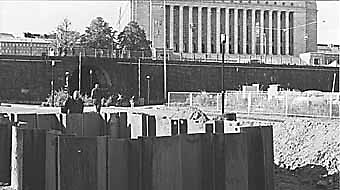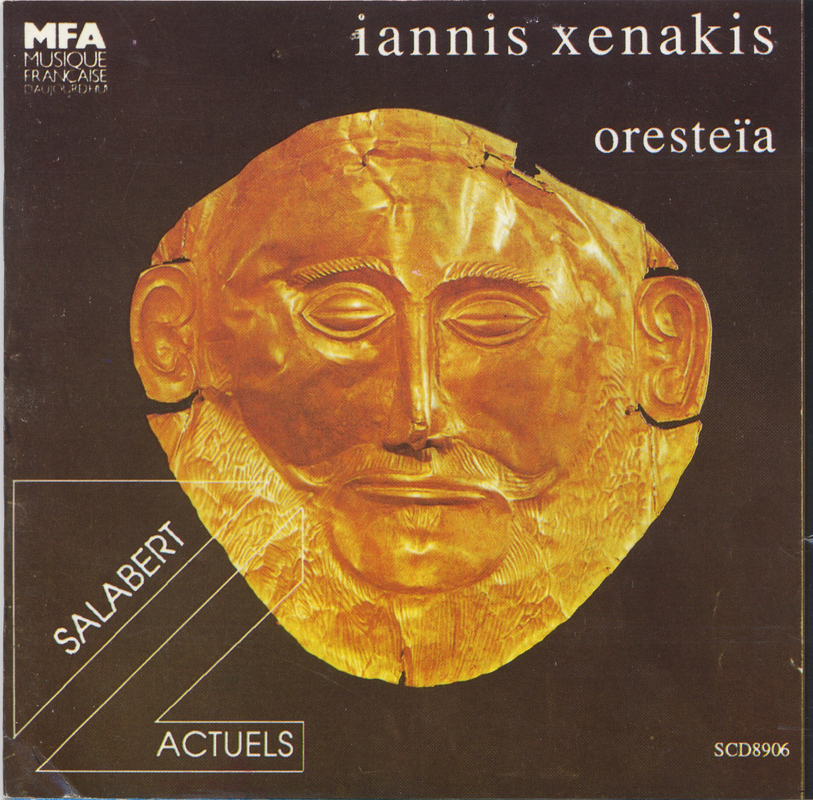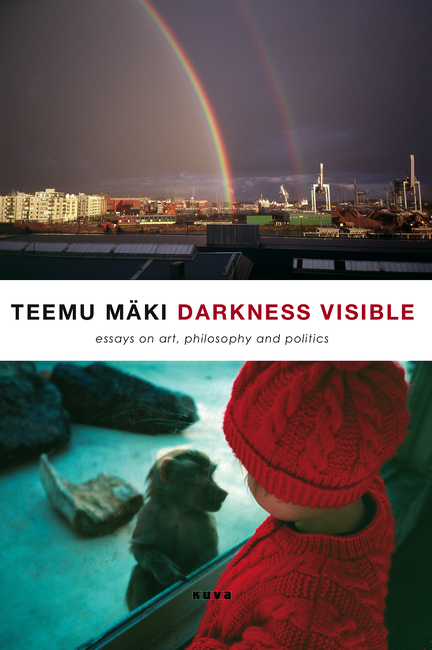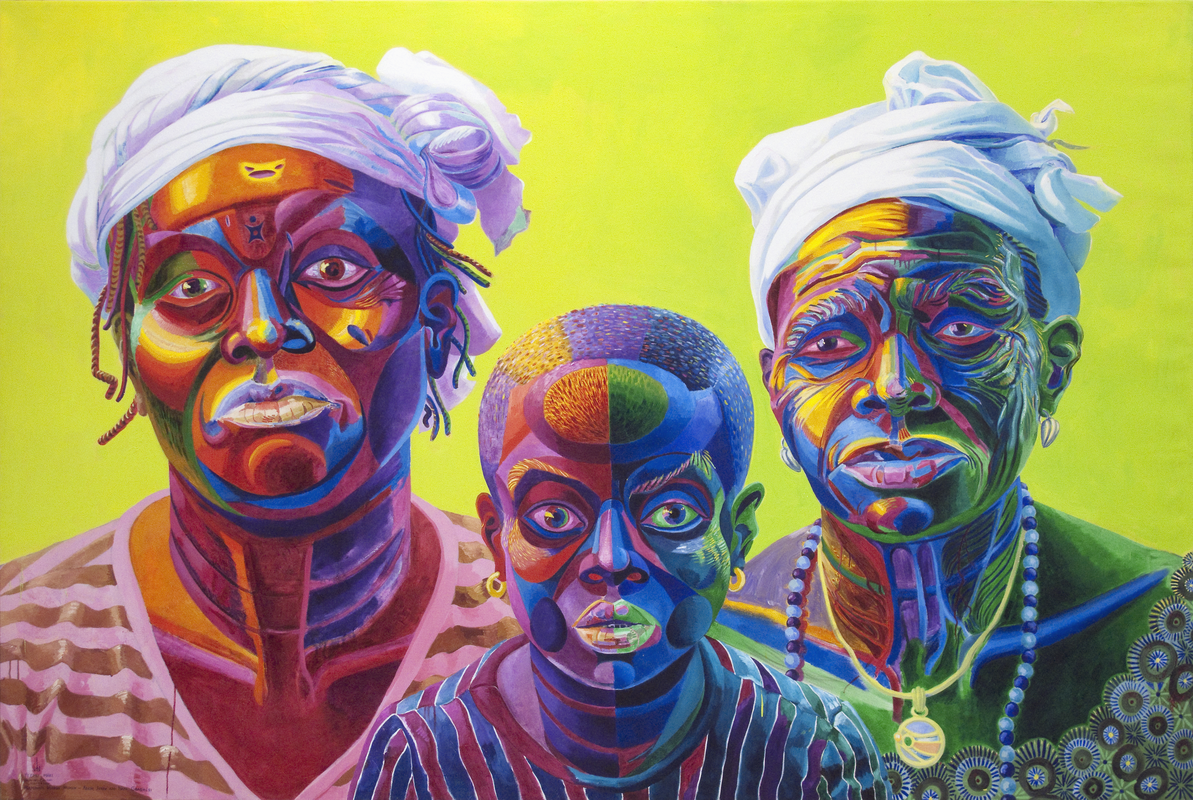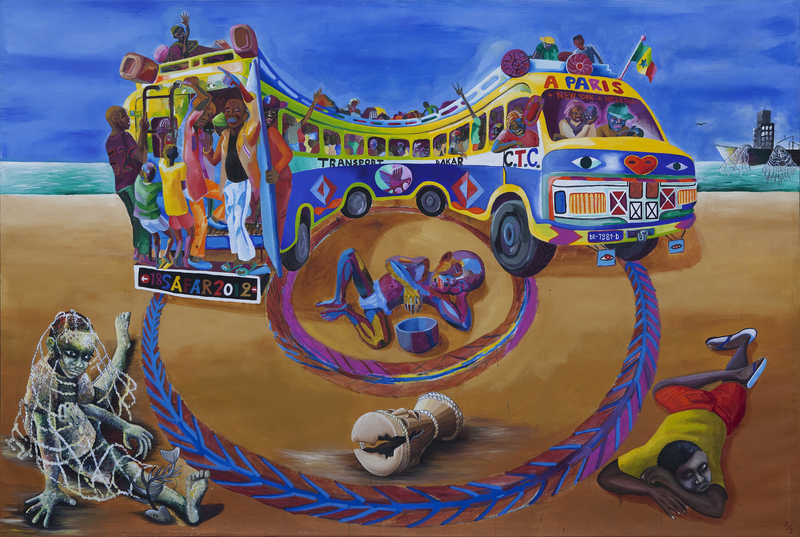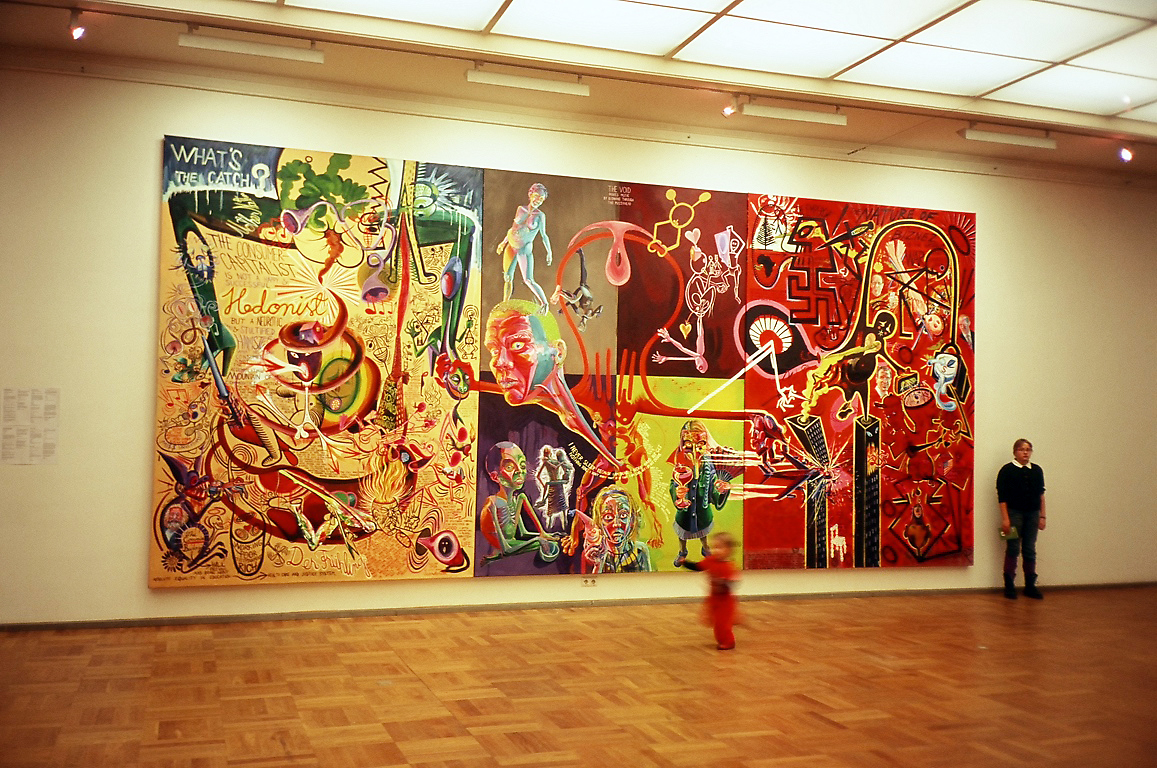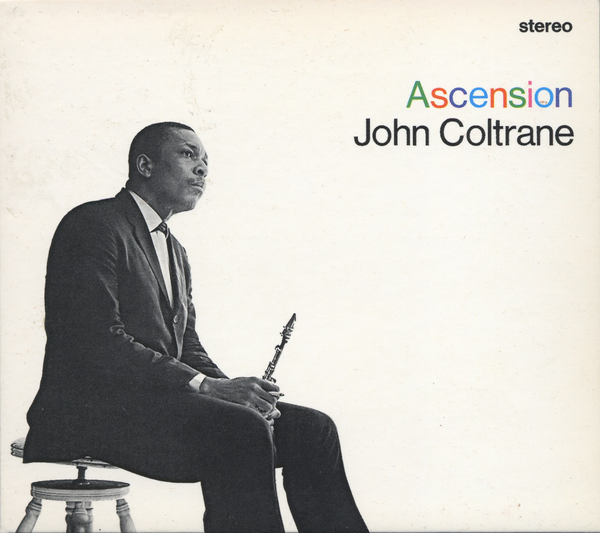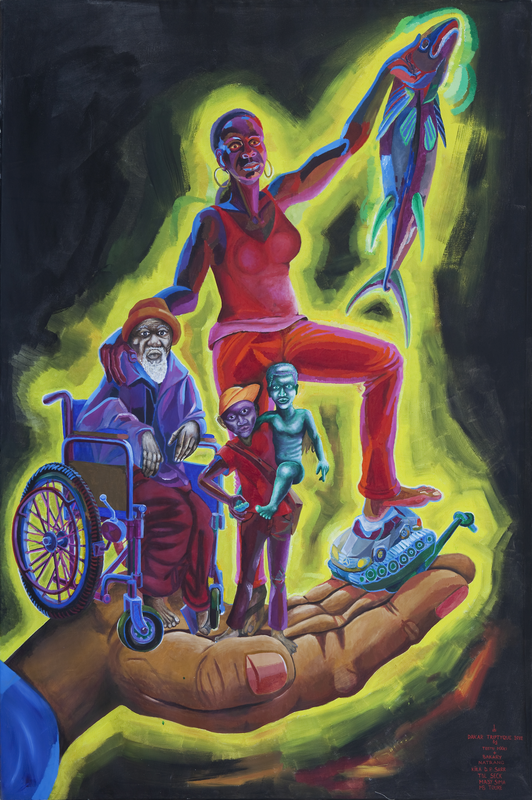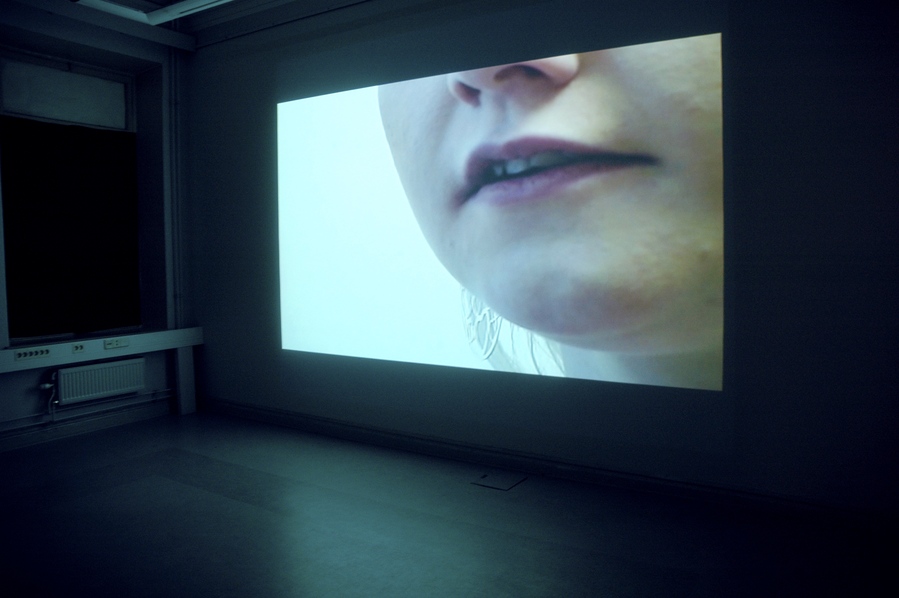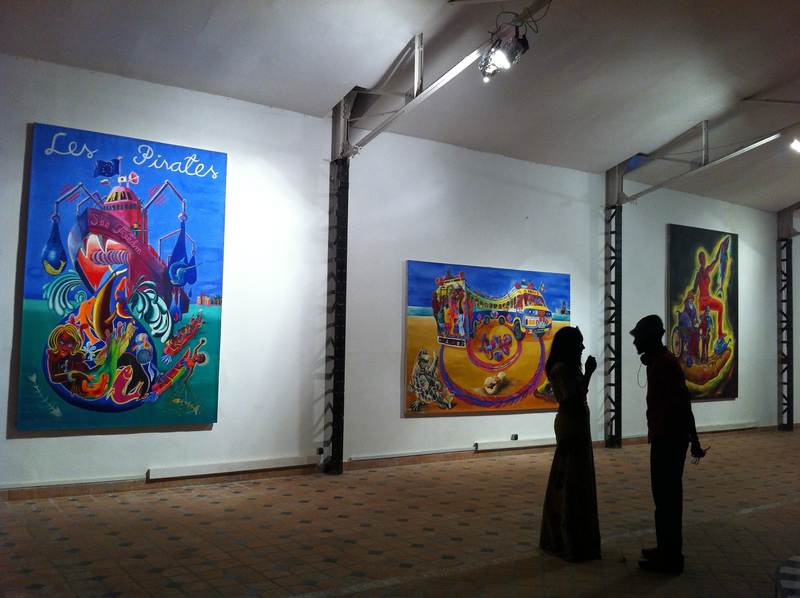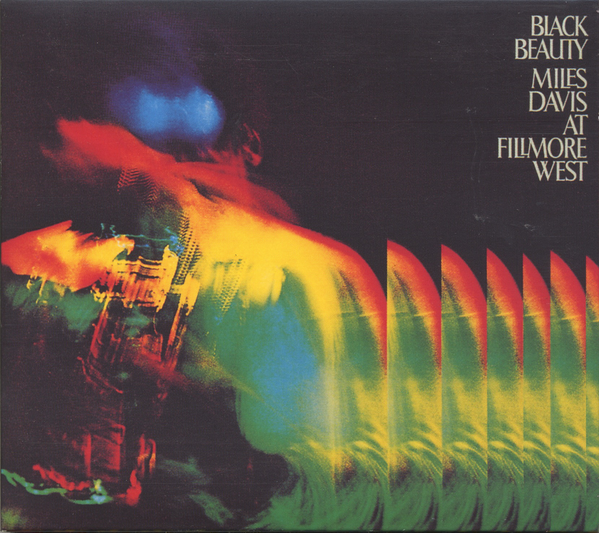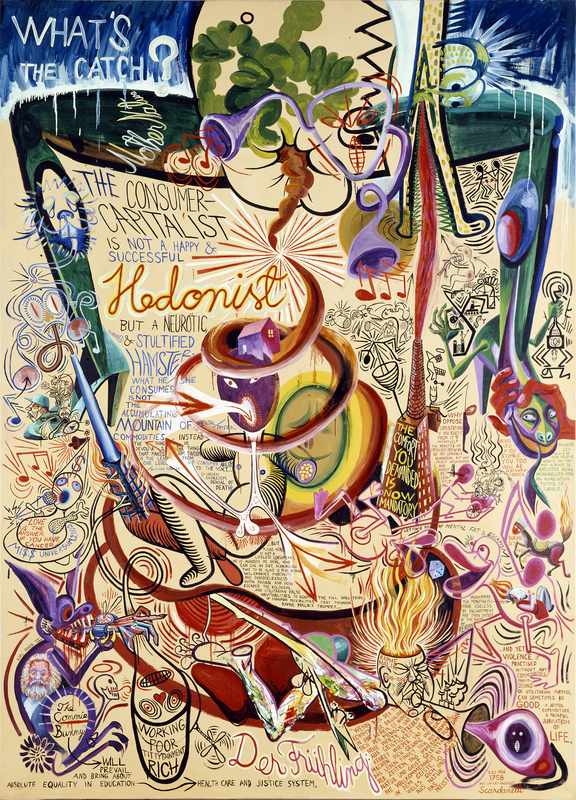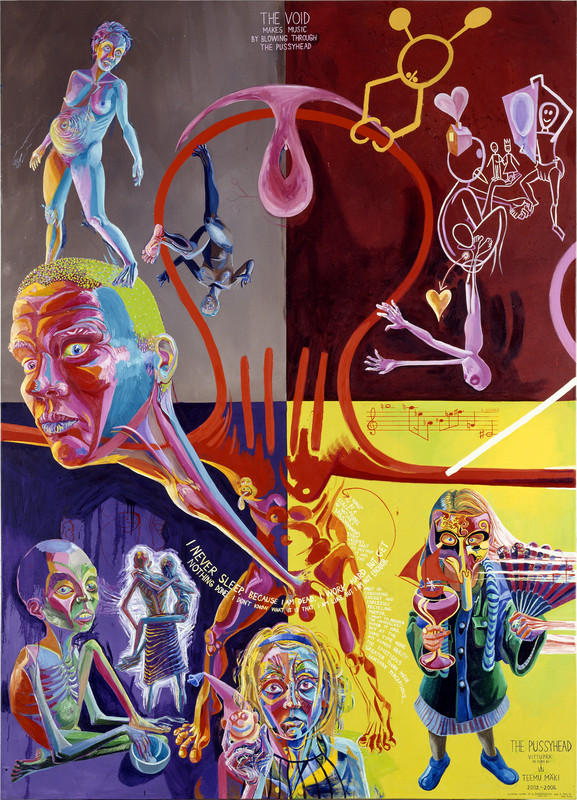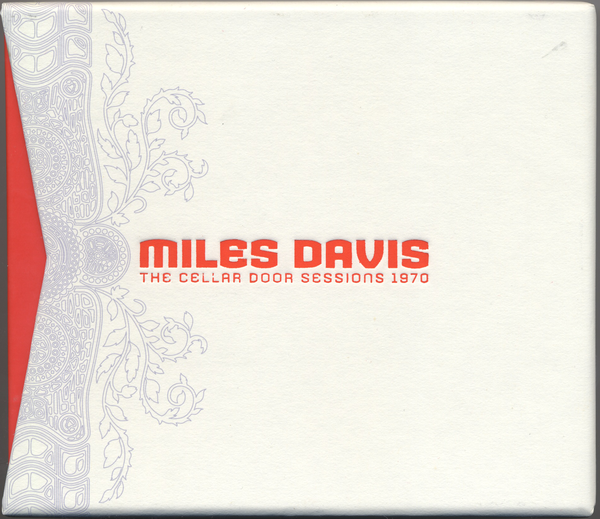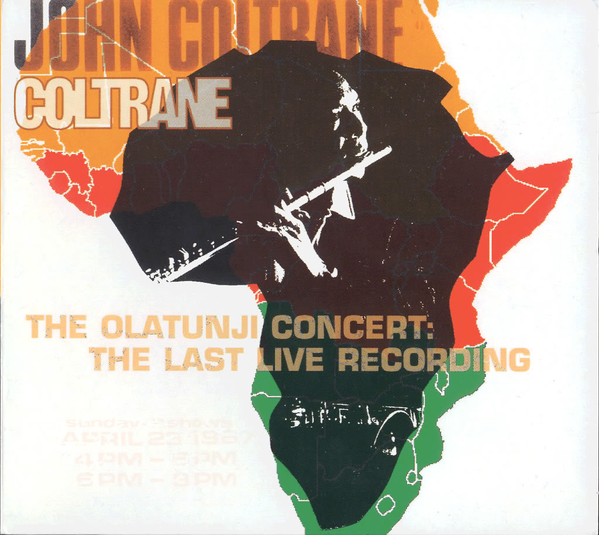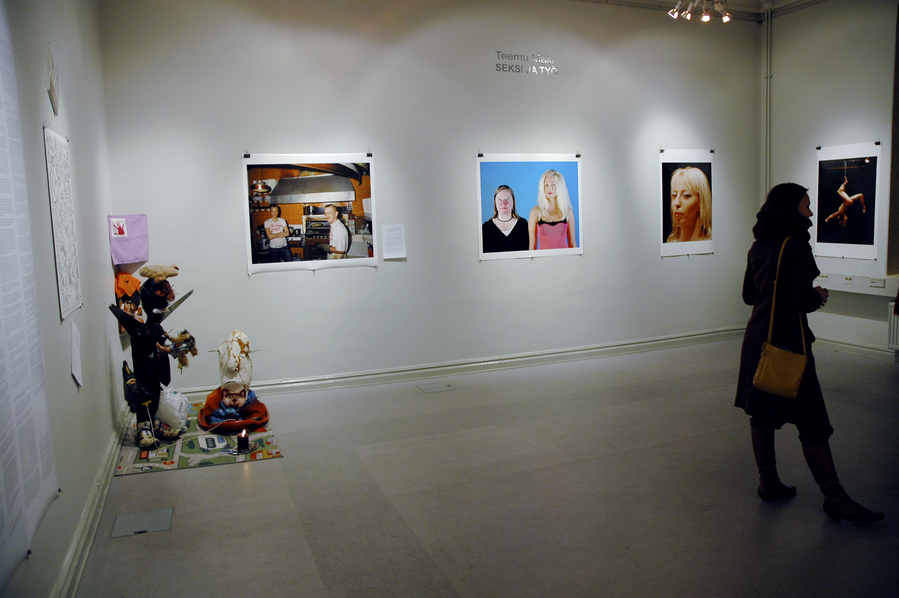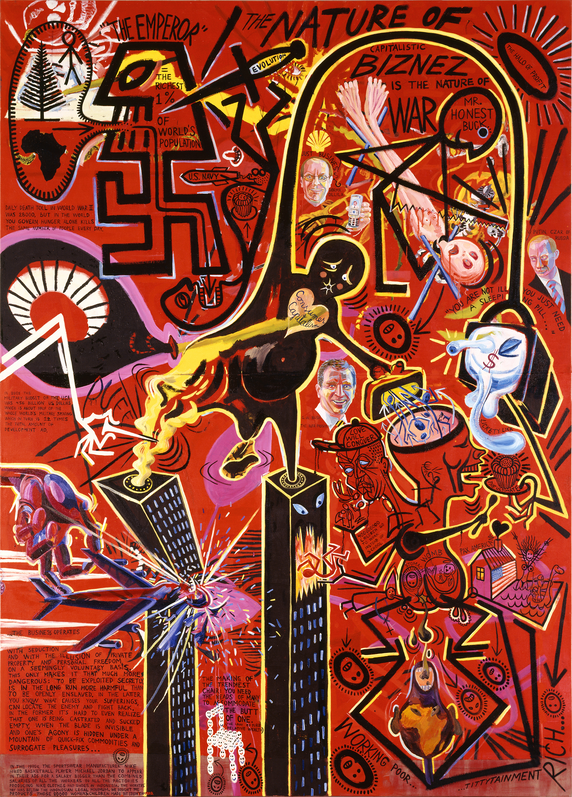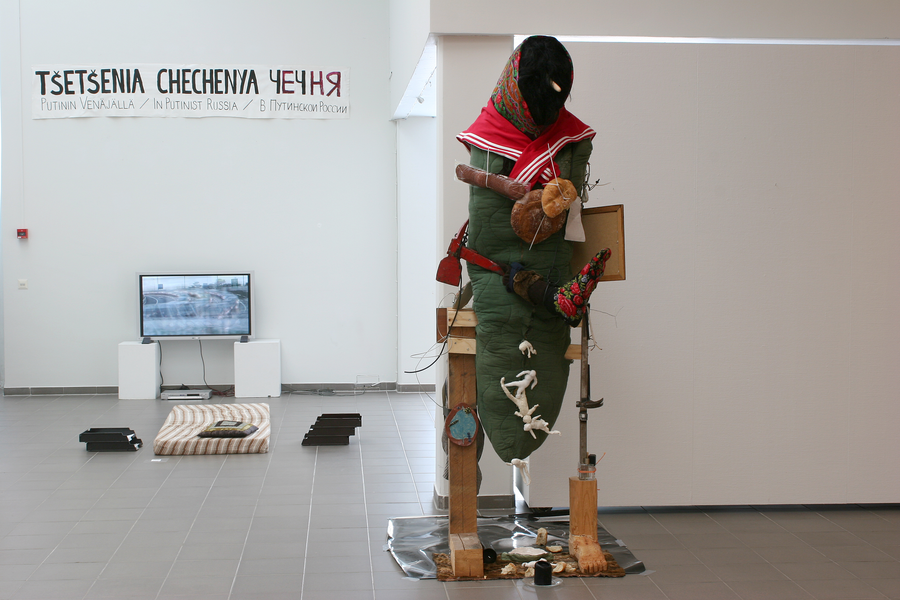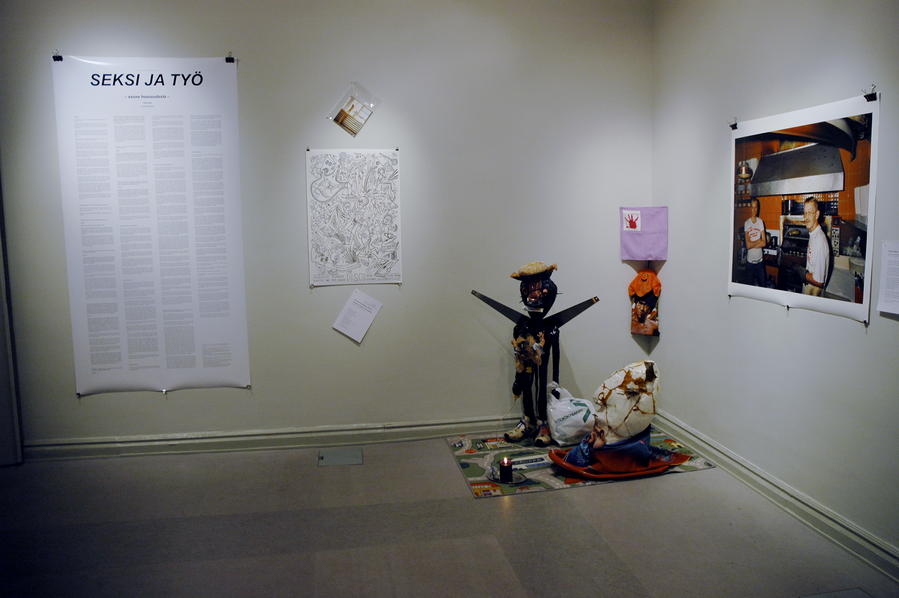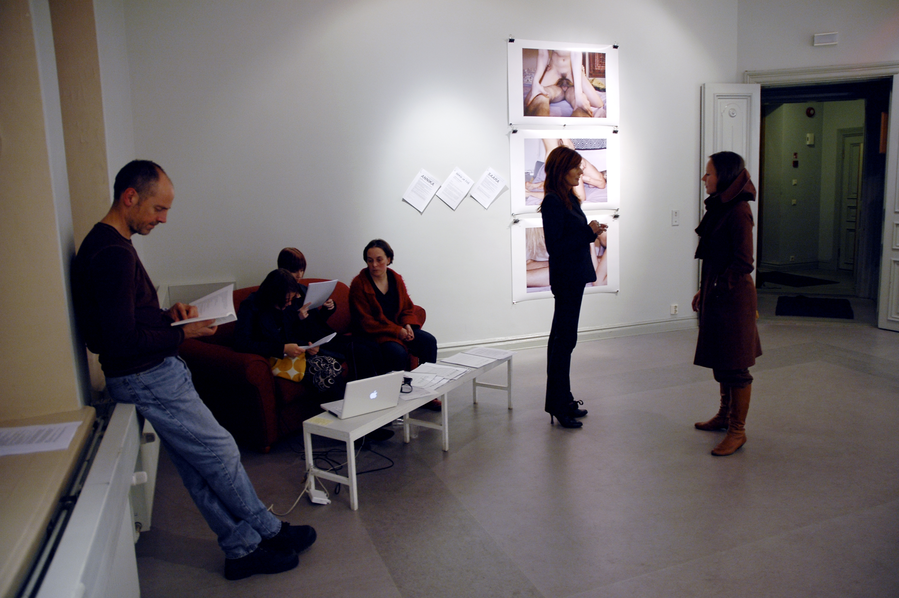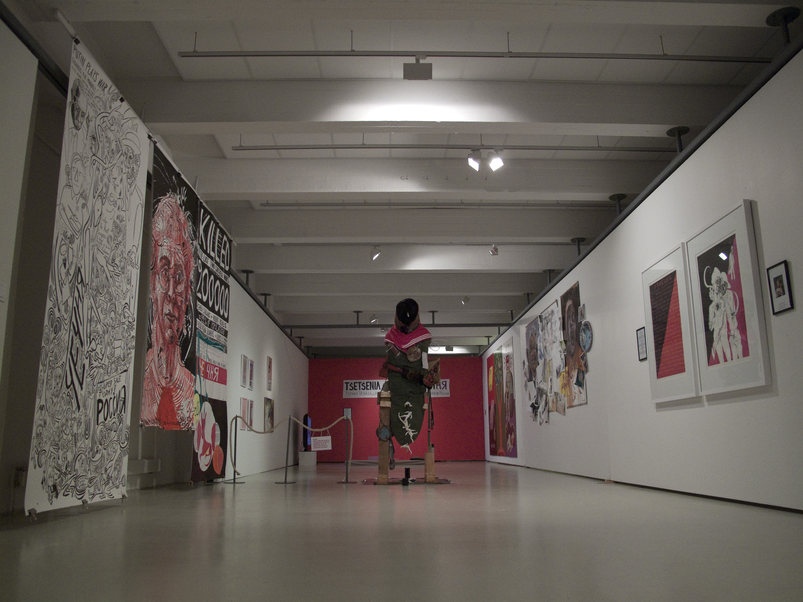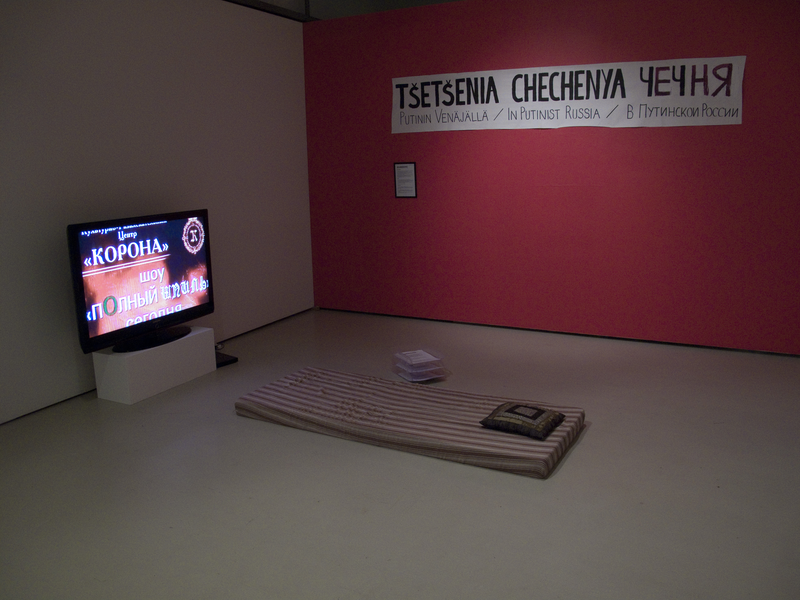For Finnish: NOKKAKOLARI – TAIDE JA TUTKIMUS KOHTAAVAT
10th version1
TEEMU MÄKI
QUESTIONS
What is research, what is knowledge, and does the former only aim at producing the latter? Why are (some) artists trying to combine art and research? What can be gained by it? What are its possible dangers or failures? What is it needed for? What is ‘artistic knowledge’ or ‘art's own knowledge’? What is included in it, what separates it from so-called scientific knowledge? In what sense is art research? How and to what extent should art and research be combined in the university context?
WHAT IS THIS TEXT FOR AND WHAT IS ITS PERSPECTIVE AND CONTEXT?
This is a text, an exposition written by an artist. It’s about art’s relationship with knowledge and about the nature of artistic research. Even though I often write in a very general, nonpersonal manner – for example, about definitions of knowledge and research – my perspective is all the time that of an artist. Also, my goal is that of an artist, because I’m looking for the kind of definitions and uses of knowledge that would help artists and artistic researchers in their work – be that work art making or non-artistic building of theory.
At the beginning of the text I contemplate what would be reasonable definitions for knowledge and research in the context of art and research. After that I make a list of what the most common motivations are – according to my own experience in the arts and in academia – that tempt artists to combine research with their artistic practice. Then I write about artistic knowledge and suggest that it could be divided into four subcategories. In the following chapter I attempt to justify art as a good form of research and explain why I see art as a special form of philosophy and politics. In the chapter ‘Not Only for Knowledge’ I deal with how artistic research differs from other types of research and what its special features are. Then I return to a more inventory-like writing and make a list of five categories, within which I think the various traditions of combining art with research can be grouped. In the ‘Conclusions’ chapter I sum up what the facts and views I’ve presented in the text might mean if applied to the university system. All in all the dramaturgy of my text, my monologue, is that the amount of artistic matter (images, sounds, poetry, etc.) increases during the presentation – and that the whole blabber finally even ends with a poem. I hope that this form embodies the deliciously schizophrenic position of an artist who jumps like a bunny rabbit back and forth between ‘pure research’ and ‘impure art’, and whose heart in the end belongs to the art side of that gap.
Some may find the tone of my text inappropriate, because a rather objective and value-neutral tone alternates with an openly prescriptive and opinionated one. This, however is precisely the way I wanted to write, because if I have anything special to say about the relationship of art and research, that specialness arises from my own personal perspective and experience as an artist.
As my artistic research is so organically glued onto and a part of my artistic work, the presentation – especially the latter part of it – also contains many samples of my art. Some may think that this is embarrassingly egocentric and wrong, that one should not write about the definitions of art, knowledge, research, and artistic research on a general level if one uses the deeply personal – that is, the author’s own art – as examples. In my defence I want to note that I don’t claim that my artworks are in any way ‘exemplary’. And I don’t even claim that they are especially apt, effective, and informative as examples of the genres of artistic research that I write about. Despite that I use my art as a source of samples, because I want to show the roots of my text, in order to make my text more understandable. And, as I am an artist, the roots of my research are always in my art. My art forms the perspective and context from which my research texts grow. The biggest challenge of artistic research in my opinion is how to deal with the gap that separates artistic experience from verbalised theory. No bridge can be built to connect them, but some kinds of jump and intercourse are possible. Attaching my artworks to this presentation is an attempt to continue and share this intercourse. If readers find the artwork samples unhelpful, they should just skip them and focus on the text.
I’ve avoided specialist vocabulary and striven for language that would be easy to read for anyone, anyone who happens to be curious about the intersections of knowledge, art, and research. There are three reasons for this. First, I’m not one of those thinkers (maybe not a thinker in general) that say that philosophy and other modes of theory building primarily concern creating new concepts or new uses for old concepts. I’m one of those who try to use plainspeak, who try to say something new with the familiar, to change the world, instead of mainly trying to expand the vocabulary and arsenal of concepts of those who speak about the world. Second, artistic research is such a marginal field that I don’t think it should weirdify itself any further by concentrating on internal discussion with the sect’s own language. And third, as I can, in my art, use a specialised, ambiguous, and dissonant language, in my straightforward research texts I’d rather go after the opposite.
I’ve written this text for myself, to clarify the various types of knowledge and their meaning to me as an artist and as a consumer of art – and now my intention is to share my thoughts about it with others. I’ve had many people test-read this text and due to their comments I have had to lengthen the text quite a lot. Test readers have been my colleagues or my doctoral students or my master’s degree students and some of them know very little about art. I’ve tried to take into account all the feedback, to make this exposition as understandable and enjoyable to all as possible.
I don’t name many sources or use many references. Some may think that this pulls the rug from under my feet, but I hope not. The categorisations I propose are mostly my own and completely voluntary, I do not claim they are the only ones possible. When, for example, I divide ‘artistic knowledge’ into four categories, I use the categorisation I created in my doctoral dissertation and point out that it’s just one possibility. I don’t have time and space here to go through the many other categorisations launched by others.
Some readers my wonder why I attach so many artworks in this exposition and yet write so little about them. The reason is that I tried to write a text that would be meaningful without any image, poem, or sound attachments. And on the other hand a text whose ideas the reader could immediately test with the attached artwork samples. The testing itself I have mostly left to the reader, in preference to telling how each attached artwork, in my opinion, is connected to and testifies in favour of what my argument in the text is.
THE DEFINITIONS OF RESEARCH AND KNOWLEDGE
There is no single universally agreed definition of research and knowledge, not even in the university world, apart from their mutual link, perhaps, which claims that ‘research is the (organised) search for knowledge’.
What, then, can be said about knowledge? For example, knowledge is the theoretical or practical understanding of something. It does not have to be verbalised or verbalisable or even conscious: skills and silent knowledge are knowledge as well.
If we stretch the definition of knowledge to such an extent, what separates knowledge from superstition and random beliefs? What is the understanding mentioned above and how can it be measured? I propose the following:
We can detect knowledge by its usefulness: it is mental or physical understanding or a skill that makes us better able to do something, use something, or predict the future activity of something. So, the old saying, ‘the proof of the pudding is in the eating’,2 can be pragmatically applied here as well. Any systematic procedure that either (A) increases empirical, logical, or other type of verbalisable knowledge or (B) improves our performance in the function in which we try to excel can be defined as research. And as the research procedure and knowledge obtained through it can be nonverbal and even subconscious, we cannot always detect or test how systematic the research method is; we just have to look at the research results and conclude that if they work in the intended manner, the process with which they have been achieved must have been systematic, not random or failing.
For most people, this pragmatic view is probably relatively easy to accept. It only becomes problematic in the contexts of science and the university, where the validity of research methods, the verifiability or falsifiability of research results, and the reliable shareability of knowledge are of utmost importance. Moreover, in both these contexts, gatekeeping is an important function that prevents charlatans and incompetent people from gaining undeserved respect and doing actual harm. This is mainly a good and understandable thing, since I need to be able to trust a surgeon already before s/he slices my belly like a pudding.
However, in the philosophy of science, definitions of research and knowledge have become more and more pluralistic: various, strongly contrasted definitions are simultaneously in use, and although there is competition, friction, and even conflict between them, science is not collapsing. The versatility of the new definitions of research and knowledge are a bigger challenge to the university system than to the scientific community or anyone else. On the one hand, universities do realise that there is a need for definitions of research and knowledge that are more versatile and flexible, but on the other, they find it difficult to create quality control systems that reliably tackle things such as silent knowledge or artistic research (I will define that peculiar term artistic research a bit later). For universities, gatekeeping is such an important function that they may be stuck with rigid and narrow definitions and practices that hinder education and research.
Perhaps a proof of this is the critical feedback my university received when it recently carried out a Research Assessment Exercise to find out what kind of research is done in the university and how successful it is. In their final report, the assessment panel complained about the narrowness of the definition of research used in University of Art and Design Helsinki (now a part of Aalto University):
The definition of research was too narrow. It did not take into account the significant contribution that practice based work and ‘artistic’ work in art and design makes to the academic research culture. The current instrument of measurement, based on ‘scientific’ achievement (i.e. traditional published materials) does not adequately reflect or monitor the processes and outcomes of ‘artistic’ practice endemic to the staff’s work.
As a result of this, many Units have self-censored much of their own sometimes excellent work. If the new university wishes to include art and design in its international agenda it will need to address the more modern international paradigms, as already practiced in other European countries.3
The word ‘research’ is used [by the assessment panel] to cover a wide variety of activities, with the context often related to a field of study; the term is used here to represent a careful study or investigation based on a systematic understanding and critical awareness of knowledge. The word is used in an inclusive way to accommodate the range of activities that support original and innovative work in the whole range of academic, professional and technological fields, including the humanities, and traditional, performing, and other creative arts. It is not used in any limited or restricted sense, or relating solely to a traditional 'scientific method'.4
The views of the research assessment panel come as no surprise to professionals of artistic research, but I quote it nonetheless here, because to the vast majority of the world and university world it is weird. In the field of artistic research it is common to frown at the ‘infidels’, who are not familiar with the field, and at their ‘backward’ thoughts. However, I think it would be better to acknowledge that most people consider art and research to be polar opposites and that only very few universities have the door open to other points of view on this. After the acknowledgement of facts one can then try to change things by speaking in a language that the opponent understands.
WHY ARE (SOME) ARTISTS TRYING TO COMBINE ART AND RESEARCH?
Adopting new, flexible definitions of research and knowledge can be difficult for the university system. It is in part because of this that the university is often an uncomfortable or even hostile environment for artists who are willing to embark on doctoral studies or post-doctoral research. It is also true that, in general, the art world does not care whether an artist has academic degrees or not – it is normal to think that academic efforts are things that some artists do instead of and at the expense of their art, not as part of it or to improve it. So, what is the point, then, for an artist? Why are (some) artists trying to combine art and research?
1.
To make better art. ‘Pablo Picasso (1881–1973) was okay, but he would have been much better if he had known more about art theory and the world outside his studio, too.’ Better artworks can perhaps be made, if:
- Artists become more conscious of their motivations and methods and of the impact of their art on audiences.
- Artists develop their practice in a more rational, orderly, and informed way.
- Artists gain greater knowledge of the non-artistic aspect of their themes and subject matter. Portrait painters or filmmakers interested in psychological insights gain much when they are educated in that field beyond what is taught in high school. Artists especially interested in global politics can make better art if they actually study economic theories instead of just scrolling through the Wikipedia articles on Karl Marx (1818–83) and Milton Friedman (1912–2006).
- Artists extend the potential subject matter of their art by acquiring new theoretical knowledge. This happens in two ways. First, becoming aware of theories previously unknown is like extending one's capability of hearing or seeing – the reality expands and becomes more perceivable. Second, theories are not just tools for the observation, evaluation, and modification of hard facts and reality, since theories themselves are also a significant part of our reality and existence. Theoretical knowledge is not just a way of seeing more and hearing better but also a part of the substance that we try to detect, understand, mould, and enjoy. Our existence, our lifeworld, is a totality in which the physical reality and hard facts mix with our poetic or rational interpretations of them and with visions of that which could or should be. Theories enrich and expand our lifeworld as much as modifications and extensions of the physical reality: we often experience theories intellectually and emotionally with the same intensity with which we experience external and physical reality. Thus, theories are an important part of our lifeworld even when they remain mere theories, without practical usage. Both of these ways lead to enrichment. Thanks to theory, we are able to see better, but theory in itself is also worth looking at. Thus, through theory we find and create new things to see and think about as well as things from which we can extract emotional experiences and make art.
2.
To understand and enjoy art more. ‘It feels good to watch Andrei Tarkovsky's (1932–1986) The Mirror (Zerkalo, 1974) again and again, but I'm unable to verbalise why. I want to learn to analyse it and dissect it verbally, to understand more, to open aspects of it that have thus far remained closed to me. I not only want to understand why I feel like this, I also, and especially, want to feel more, more variety, greater intensity.’
Two goals: to become more conscious (i.e., to understand more) and to get more pleasure (from art). Good theoretical knowledge and other modes of verbalised inquiry enable us to derive greater meaning and nourishment from a piece of art. This seemingly obvious notion must be repeated again and again, since many people – both in audiences and among art professionals – still mistake theory for some kind of antidote to art experience, as if an artwork was a crossword puzzle that can be solved with theory and thus made useless.
3.
To explain art better. ‘I can paint and I know a good painting when I see one, now I want to learn to verbalise my conviction.’
This is a narrow version of the previous motivation. Artists focusing on this do not strive after richer insights into art or more ravishing art experiences (or they don't believe that theory/research would yield these), they are just after better communication abilities. Their convictions are already cemented by intuition and emotion, and they no longer want to question them. Instead, they want only to construct a verbalised, rational justification for their beliefs and to be able to convincingly communicate them to others.
It is a mode that often produces no new knowledge about art, and also a mode in which it is rare that an artist's personal view and artistic practice develop further during the research process.
This mode clearly lacks the self-critical awareness that is an essential part of any serious study. Yet, we do not have to see it as a mere travesty of serious research; the lack of a self-critical ability is not necessarily fatal, as it does not automatically prevent an artist/researcher from producing shareable knowledge about how the disciples of a particular artistic style, genre, school, practice, or philosophy see and think. It just prevents the artist/researcher from evaluating the premises, the core assumptions of that school of thought, and from critically testing them with the arguments of its rivals.
Artists who don't want to question their beliefs seriously, but just want to learn to verbalise their convictions in a way that sounds rational, fail as critical researchers but can nevertheless produce useful knowledge. Often this knowledge is mainly of a pedagogical or social value. For example, just verbalising some of the core principles, practices, and goals of each genre can relatively easily expand the circle of those who are able to enjoy contemporary dance or free jazz or performance art. These core ideas and practices are often so obvious for practitioners and avid fans of a genre that they do not feel any need to articulate them verbally or theorise about them. For outsiders, however, the verbalised knowledge of the genre may be the essential key without which the whole genre remains off-putting, incomprehensible, and suspicious.
4.
To understand more of the world through art and then to change it with art. In a way, this is, of course, a variation or part of the motivation I listed first; the one in which an artist tries to combine art and research to make better art. Yet, the mode and goal of this more politically oriented motivation is perhaps distinct enough to be listed separately. The first motivation on my list was based on the idea that knowledge in general is helpful for an artist, too, while the fourth is based more on the idea that knowledge of the world is essential for artists if they want to tackle political issues. As Bertolt Brecht (1898–1956, or perhaps actually Leon Trotsky, 1879–1940) said: "Art is not a mirror that reflects the reality but a hammer which shapes it.”5 If we see art in this way, mainly as a philosophical-political activity, then gaining greater knowledge of the world becomes as important for an artist as gaining greater knowledge of art. To hammer the world into a better shape one has to know where to hit and why.
5.
To gain respect and better pay: ‘I'm good but I want to have some academic proof of it, too.’ This motivation is not good for art, research, science, or understanding.
–
Some form of research process is part of practically all art making. Most artists are not satisfied with merely absorbing the knowledge that is already out there, but also want to test it, modify it, connect it with their art making, and produce new knowledge, new values, and new experiences through artworks. On the other hand, the five reasons for combining art and research mentioned above do not automatically lead to research in the sense that the word ‘research’ is used in science and universities. If research is a natural part of practically all artistic processes, when is it reasonable to give it a special mention and talk about a ‘combination of art and research’ or about ‘artistic research’?
KNOWLEDGE OF WHAT? – THE FOUR CATEGORIES OF ARTISTIC KNOWLEDGE
All combinations of art and research use and strive for knowledge. Nevertheless, there are often other goals as well. Many artists focus mainly on the creation of new moral or aesthetic values or experiences; however, the hunt for knowledge is always a crucial part of the process, either as a tool or as an end in itself.
Non-artistic knowledge can be used, for example, to improve the practices of research of art or to develop artistic techniques. For centuries, psychological and sociological knowledge have been the sources of art historical and theoretical analyses of artworks. Moreover, advances in electronics have given birth to video art, or at least made video art possible, and they have since done the same for ever-new forms of media art. In these processes, imported non-artistic knowledge is not only used with artistic knowledge, it is also partially merged into artistic knowledge.
Artistic knowledge is knowledge about art or knowledge about something else produced by art or by researching art. In the introduction to my doctoral dissertation,6 I proposed that artistic knowledge could be divided into four categories in the following way:
1.
How to make art? – Knowledge about how art is made: knowledge of the process of the creative act, such as painting methods, composition systems, various traditions of how to train an actor and how to create a play for the theatre stage, and so on and so on.
When artists produce this type of knowledge, they often have a concrete need for developing better artistic methods: to make better artworks. Because of this, their focus naturally is different from the focus of those researchers who are not artists themselves. Both do mostly qualitative or interpretative research, but pure researchers usually strive for a more neutral, informative, and inventory-like knowledge than artists, who not only want to know how art is made but also take a stance on how art is made well.
2.
How to view art? – Knowledge about how art is interpreted, used, and consumed. How to view Kazimir Malevich's (1878–1935) Black Square (1913) and find it meaningful? How to read Samuel Beckett's (1906–89) Malone Dies (1951) as an especially rich form of existential philosophy?
Again, when artists are striving for this type of knowledge, their research interest is usually different from that of other scholars. The two opposing poles of research interests can be described as follows. One is mainly concerned with art history, such as in the family tree of artistic movements, and in creating an informative view of what happened in the arts and why. The other is more interested in how to get the most out of artworks, how to squeeze an artwork of all the potential knowledge and passion that it carries. I assume that artists are usually more interested in the latter – in the nourishing potential of artworks. Their research mode is more practice-led in this sense as well, as it aims to use art and to maximise the sensual and intellectual rewards of artworks rather than to explain art or maximise art historical knowledge.
3.
What did the artist mean? – Knowledge about the artist's conscious intentions and unconscious aspirations. What did the artist try to do, express, or achieve with the song, painting, or film s/he made?
An old-fashioned way of writing art history considered that knowledge of an artist's intentions was crucially important; thus, it misunderstood intentions, mistaking them for the actual content of the artworks or the ‘correct’ or best interpretation of the work. Today, the author is no longer thought to have that kind of authority, and therefore, unlike earlier, knowledge of the artist's intentions is not considered such a central key and guideline to the interpretation of artworks. Now all interpretations are allowed, and the artist's own suggested meaning is just one of them. Pragmatically, most of us think that the interpretation that yields the most interesting things from the artwork is the best one – no matter how close or distant it is to the artist's own intentions and the experiences s/he aimed at.
However, even though knowledge of the artist's intentions is less important to art historians and the audience than before, it can still be very useful to the artist. An artist researching his/her own intentions and the intentions of other artists has a special, practice-based approach and also a special, practice-led goal: to produce artistic knowledge that is useful for artists in art making.
The more that artists are aware of their intentions and motivations, the better enabled they are to question, adjust, and develop them, and the better enabled they are to achieve their goals, make the kind of art they want to produce, and achieve the desired impact on the audience. Also, comparing the intentions and end results of other artists is often extremely helpful for artists when they are trying to adjust their own working methods. For example, an artist may research how a colleague's finished work differs from that colleague's ideas concerning the form and content of the work before it was finished. Alternatively, s/he can study how the actual, proven impact on the audience differs from the one the colleague was after; but this comparison is, of course, only possible if knowledge of the artist's intentions is available – if artists share the ideas they have had while making the work at the studio.
The audience, of course, reads a work in a way that is different from what the artist intended. The artist has written a message that differs either a little or a lot from what the audience actually finds in the work and believes to be the artist's message. Knowledge of this discrepancy can be useful if and when an artist wants to become understood, but it does not mean that art is shrunk into mere communication of exact, locked, and unambiguous meanings, because only a part of an artwork's content and meaning can be translated into a commonsensical, verbalised argument – and artists are always only partially aware of their motivations and aspirations and of the content they have planted into their work. If we agree to use the word intention to describe a conscious effort towards a verbalisable goal, it is important to remember that only some of the motivations and goals of artistic practice fulfil these criteria. Moreover, a part of the unconscious can be migrated into the realm of the conscious (the intentional) through self-reflection, but only a part. Keeping this limitation in mind, artists may still want to become as aware as possible of their own aspirations, of the intentional and the verbalisable part of the content of their art, and may also want to know what the audience makes of that art in order to develop both the content and the form of their art further.
4.
Art's knowledge about society and humanity. Art uses special tools, methods and languages, and may thus produce knowledge and insights about society and us that would be hard or impossible to produce by other means and in other spheres. Art makes observations, analyses, and claims about the world; it tests and evaluates ways of living, it creates and proposes new values, new ways of living and experiencing. Art is thus constantly interfering and overlapping with and contributing to non-artistic knowledge.
Combining art and research means importing non-artistic knowledge into art, but this does not have to be a one-way street. Often, the process is reciprocal: non-artistic knowledge is imported into the research or the art making process in the field of art, after which the research results or artworks are shared, exported, and offered as knowledge or moral philosophical reasoning that can be useful or rewarding in some other sense, not just to the arts but to society in general.
The four categories of artistic knowledge are not clearly separable. For example, it is clear that art's knowledge of the society and humanity that surround it not only resides in the artworks but also in and throughout the interpretations of artworks and ways of experiencing them. The third category of artistic knowledge – knowledge about how art is interpreted, used, and consumed – can be fairly neutral knowledge about how to listen, how to look, how to read; but, on the other hand, it is with this interpretational toolbox that we open the artworks' philosophical-political content. The content of the toolbox can therefore have a crucially important influence on what we find and create and on what – through our art-related discussions – the social impact of our art experiences is. Thus, knowledge about how art is interpreted, used, and enjoyed is, in the end, rarely even close to neutral. It is a type of knowledge, in which it is almost impossible to stick to a merely descriptive and seemingly neutral verbal analysis of artworks. Indeed, an analysis cannot be done properly, at least not in the deeper sense of the word, without assessing the artwork's social, political, and philosophical meaningfulness and value. And when one of these aspects is taken into consideration, the argument is not anymore only about the artwork; instead, it expands into a philosophical-political argument about the world.
As we digest all art into a sort of nourishment through some kind of interpretational process inside us, we could think that we do not need the fourth (‘art's knowledge of society and humanity’) of the aforementioned categories at all and that three would be enough, because, in a way, the third category partly includes the fourth. However, I think that it is important to mention the fourth category separately, as it is the most important of all these categories. By mentioning it separately, I also want to point out clearly that art as such produces, contains, and spreads knowledge, including when it does not go through any academic machinery that produces theory-grounded explanations of it.
The fourth type of artistic knowledge stretches definitions of knowledge and research in a fruitful way. In artworks, knowledge of facts is mixed with knowledge of values. The mixture is ‘impure’ knowledge, and the research process that leads to it is ‘impure’ research in the sense that it does not pretend to be objective or impersonal. However, it is not random or solipsistically subjective either. Instead, it is just an attempt to create and use knowledge and values together. Its starting point is the idea that knowledge cannot be clinically separated from values or the perspective and context where it is created and used.
WHATEVER WORKS – THE JUSTIFICATION OF ART AS RESEARCH
Should the combination of art and research aim at creating knowledge about art or about the world through art? Should it produce more knowledge in general or more knowledge about art in particular, or should it focus on producing better artists and better artworks? Furthermore, should this type of research be neutral (descriptive) or should it openly demand change (prescriptive)? The list of open questions concerning the connection between making art and doing research goes on and on. In society and in the art scene, as well as in science and university circles, there is no consensus on what the combination of art and research should aim at.
In these discussions, the fourth type of artistic knowledge is often altogether forgotten, but for me, as an artist, it is the most important of all. I am more interested in the valuable insights that art or artistic research can produce about the world and in the kinds of changes it can cause in society than in what research of art can tell me about the family tree of artistic movements, the structure of artworks, or the way some of the players in the field manage to steer the art world according to their own agendas.
I hope the combination of art and research will lead to better artworks: works with a deeper understanding of the world and a more insightful commentary about how the world is and how it could and should be.
If we accept that art can produce knowledge about society or other philosophically or politically meaningful insights, then we must also, quite radically, accept art as a potentially valuable mode of research in general. We should be able to detect a significant research tendency in much of art, not just in the kind of scholarly writing or art making that labels itself as a combination of art and research.
Brecht's poem ‘Traveling in a Comfortable Car’ is an extremely simple yet illuminating example of art as research, an example of the attitude where an artist tries both to see the world as it really is and to change it:
Traveling in a comfortable car
Down a rainy road in the country
We saw a ragged fellow at nightfall
Signal to us for a ride, with a low bow.
We had a roof and we had room and we drove on
And we heard me say, in a grumpy voice: No,
we can’t take anyone with us.
We had gone on a long way, perhaps a day’s march
When suddenly I was shocked by this voice of mine
This behavior of mine and this
Whole world.7
It may not be normal to think of this poem as a combination of art and research, but if we assume that Brecht had first acquired social, political, statistical, and economic knowledge and on this basis built his philosophical-political statement in the form of this poem, then the process as a whole can surely be seen as research. Moreover, the theoretical component of the poem is evident not only in the preparatory stages of its writing – that is, in Brecht's investigation of what is going on in the society – it is present also in the lines, or between the lines, of the poem itself, as a self-critical analysis of how we tend to react to those in need. In other words, this little poem can be regarded as qualitative research and a critique of our habits of moral reasoning. Research can be totally embedded into artworks such as this; it does not always have to take the form of a theoretical text written by an artist to accompany or explain his or her artworks.
If we accept the art-as-research option and acknowledge that art making as such can be a form of research, this does not remove the constant need to feed artistic activity with non-artistic knowledge. Especially when art and research are purposely combined, one of the main aims is to import a great amount of non-artistic knowledge and methodological tools into the four types of artistic knowledge production in order to nourish and empower them. Without this kind of external input, artistic knowledge can hardly be developed very far.
For example, if we were to study, research, and develop portrait painting – either through painting, photography, or writing about paintings and photos – we would not get very far if we paid no attention to what contemporary philosophy, psychology, and social theory have to say about the structure of the self.
It is difficult for an artist to become a real specialist in any non-artistic field of knowledge, but combining art and research inevitably means that this is something one has to try – one has to try to juggle with a number of separate balls from various fields of knowledge. This juggling act is the very essence of most forms of artistic research, especially of those in which art is seen as a politically active practice. And this political activeness and philosophical alertness is of course precisely what not only Brecht but also Theodor Adorno (1903–69), Michel Foucault (1926–84), Maurice Merleau-Ponty (1908–61), and numerous others demanded from contemporary art.
ART AS A PHILOSOPHICAL-POLITICAL PRACTICE
I have proposed that we should acknowledge art (at least potentially) as research. I have also proposed that we can, in principle, organise artistic knowledge into four categories, one of which is ‘art's knowledge about the world’. I have also claimed that this knowledge can be verbal or nonverbal, conscious or subconscious, but I will now try to define more closely what kind of knowledge it is, how it relates to other types of knowledge, and what its function in society is.
Art can be a flexible and extended form of philosophy and politics. Art does not have to be content with ‘asking good questions’ only – it can also try to answer them.
Immediately we hear a bunch of sceptical questions: With what muscles can art supposedly answer the ‘good questions it proposes’? After all, aren't the answers always created elsewhere – for example, in the fields of science, technology, or philosophical theories and their political applications? If art tries to step into the fields of knowledge and ethics, can it adopt roles other than those of a communicator and copywriter; can art be anything more than just illustration, communication, and the persuasion technology of, say, the Enlightenment and human rights philosophy?
For the answer to be ‘yes, it can’, and for art to be seen as a form of critical thinking and action that deserves to be taken seriously, we must redefine art’s relationship to knowledge, values, worldview, and pleasure. For example, like this:
(A)
Art also creates, tests, and spreads quite regular knowledge, that which can be verbalised, verified, and distributed with precision. In this function, art can use either methods that are more general or, alternatively, methods that are characteristic only of art. It is because of the latter kinds of methods that art is also able to create knowledge that would otherwise not be created at all. For example, the methodology used in a research survey can also be used in art. Moreover, it is possible to carry out, say, a preliminary statistical study for an artwork, but in addition to these methods – or in their place – art can make use of various other methods, including participatory intervention in a public space, performance, or a false advertisement. These can also be used to acquire knowledge of people’s behaviour and values or to communicate to them different points of view and their rationales. It is often acknowledged that art is an effective form of communication and that it is able to convey values and knowledge in a particularly dense and heartfelt form. However, it should also be recognised that art is not only a communication method but also a method for creating knowledge and understanding. In this sense, so-called political art by its aspirations and goals is often very close to everyday journalism, discourse, and politics.
(B)
Art may spread regular, verbalisable knowledge in a very compact and striking form. It's an efficient form of knowledge distribution, when it wants to be.
... but what is even more special and valuable is the fact that:
(C)
Art makes experientially true values and knowledge that we otherwise would often adopt only superficially.
One can have, for example, mathematical-rational, factual knowledge of how to create and nourish reciprocal trust and love in human relationships, about how and to what extent buying Fair Trade bananas reduces exploitation,8 or about how to fight climate change, but this knowledge does not necessarily lead to action. Why? The usual explanation is that knowledge is not enough if one does not have the courage, diligence, and moral drive to do in practice what one supports in theory. However, we can also extend the definition of knowledge and say that the mathematical-rational knowledge described above is merely one breed of knowledge and that the aforementioned passivity is not so much a case of emotions defeating knowledge, which would leave knowledge unused, but instead a case of knowledge remaining merely an incomplete stump, a mere list of information or principles, which we do not take seriously because we have not really internalised it.
Knowledge that we have learned but which we have not fully digested, knowledge that we assume we know but do not take seriously and do not put into action, is not really our knowledge, but just an antecedent, a grain of knowledge that only becomes nourishing when it's cultivated into a fully grown plant. Of course this is partially a matter of figures of speech: Is knowledge that does not lead into the action it necessitates just knowledge I've decided to leave unused, or is it knowledge that I mistakenly believe I know but which has not grown into anything more than a helpless stump? On the other hand this is more than just a matter of metaphors, it's about how we should define knowing. I'm in favour of the version where knowing includes internalising the knowledge so physically or holistically that one cannot leave it unused, but is forced to behave in the way the knowledge demands or to counter it with some other serious bit of knowledge or moral reasoning.
A large part of what we know is of this type – we have not really digested it. We also put into practice only a few of the values that we praise in principle. Knowledge and the raw material of values tend to pass through our mental digestive system without actually being absorbed, leaving a trace, or having an influence on our behaviour. Correcting this failure is one of the basic functions of art. We can do this, for example, by following the teachings of virtue ethics, by using art as a way of training and intensifying our positive emotions and personal characteristics. Shoah (1985), a documentary by the philosopher-artist Claude Lanzmann (1925–), forces the viewer to ponder the Holocaust in a more embodied, experiential way than history books do. And the Oresteia trilogy (Agamemnon, Choephoroi, and Eumenides, 458 BC) by Aeschylus (525–456 BC) can intensify our sense of compassion and make us understand the relativity of justice more efficiently than any non-artistic method.
These works guide us to sympathise with all the characters, thus making us understand the conflict from several points of view simultaneously. On the other hand, they distance us from individual perspectives and agitations and challenge us to consider the conflict more rationally. Works such as these are an important form of moral philosophy because in them we can think of values in a way that on one hand is passionate, compassionate, and assimilative, but on the other hand clearheaded and analytic, as if the entirety was simultaneously examined from a bird’s eye view too.
(D)
Art creates and distributes the kind of silent, tacit, or experiential knowledge and values that are only partially verbalisable. Art (and philosophy) are essential, because values cannot be derived from mere facts. In other words: from how things are we cannot directly draw any conclusions about how things should be. David Hume (1717–76) formulated this idea compactly as "there is no ought from is" in his Treatise of Human Nature (1739–40). Moral realists, ethical naturalists, and many utilitarians disagree on this, of course, but it is still fair to say that for many or for most in contemporary philosophy and politics the central dilemma is: How to make the leap from facts to values? What can moral reasoning be based on, how can we make moral choices without pretending that all that is needed to support them is objective reasoning with pure facts? On the other hand, how is it possible to prevent moral reasoning from collapsing into mere matters of taste? The challenge is especially fierce today, when conflicting moral systems and traditions collide in our globalised world, more and more often without a shared or objective measuring stick or an authority that could solve their conflicts. Moral discourse is more necessary than ever, but unfortunately it is increasingly often avoided by delegating value statements to the ‘blind hand’ of market forces.
Values float somewhere between facts and subjective statements, so in testing and creating them, neither sheer feeling nor clean, clinical reasoning is enough. Art operates in this unclear territory, dwelling on questions, such as ‘how does it feel?’, ‘how is it?’, ‘what do I really fear, and what do I really want?’, ‘why should we keep on living, and what makes my life worth living?’, ‘how does one make a life out of mere living?’, ‘how should we live?’, ‘how does one be a man or a woman and why?’, and ‘what is good life?’.
Art includes much verbalised or verbalisable reasoning, but art's greatest strength is in the continuation of thinking beyond verbalisable reasoning. Especially when perceiving, testing, and creating values, this is an essential dimension, since the ability to appreciate things, the will to live, and the joy of living are mainly experiences, not conclusions of rational pondering. Art is the most efficient (though not the most used) human-made method for moulding our lifeworld, and thus an excellent form of innovative and embodied moral pondering.
(E)
In art we shape our worldviews in their most complete and full-bodied form. A person's philosophical-political conviction is not just a collection of verbalised propositions and their rationale. It is a more extensive, holistic thing: a worldview, an outlook on life, some kind of multisensory vision of what has been, what could be, and what one would like the world and the self to become and how.
When this full-bodied visionary form of the philosophical-political conviction is then tamed into neutral, matter-of-fact, fully verbalised argumentation, a secondary form of worldview is created. It is an attempt to condense the primary form into something more easily manageable, into something that can be communicated with fewer misunderstandings and justified more easily.
In art, there is room for straightforward philosophical-political argumentation, but of greater importance is the creation, testing, and expression of worldviews as artistic visions, without any pressing need to translate them clumsily, step by step, into a verbalised argument.
(F)
Art is a good method for dealing with questions and problems for which there is no final answer or solution, but that we still have to face in one way or another.
For example, the previously mentioned ‘what is good life?’ is a question that cannot been solved like a mathematical equation. Mortality is another, similar challenge. On the one hand, it is simply an enemy that we fight when trying to reduce the infant mortality rate. On the other hand, it is something very different. We can philosophically reason that mortality is a part of life, not an enemy of life, and that if one wants to live well, then one has to come to terms with one's mortality somehow, maybe even learn to praise mortality as the ultimate source of all passion and the creation of values.
Yet no matter how hard one intellectually toils away with either, the challenge of mortality will not be resolved. We cannot solve it like a crossword puzzle – not even if infant mortality was reduced to zero – as our relationship with death is contradictory and filled with tension in such a fundamental way.
In art, we try to adjust and compose this relationship and this tension, so that it will be as pleasurable, meaningful, and life-affirming as possible. Of course, art does not have a monopoly on this kind of adjustment. Surely, for example, politics is also often about facing the same kinds of problems, which cannot be permanently solved in the way problems caused by technical obstacles can. Polio can be totally eradicated from the world, but balancing rights and responsibilities is a permanent challenge for societies and individuals as well. Nevertheless, in art, this adjustment of life often reaches its most complex form: that in which the question is no longer about solving problems in the technical sense, nor is it about composition in the simple sense of balancing a few elements on a horizontal equilibrium, similar to scales or a seesaw, it is about composing the whole of a life, without rules and without any other clear goal than good life – the criteria of which remain permanently open.
(G)
It is harder to read a good poem than to write it.9 This is the opening line of a poem of mine, and it is my honest opinion that one of the special features of art is that consuming art is often as difficult as making art: it requires as much effort, expertise, patience and enthusiasm. This is why three things – work, the fruits of one’s labour and the enjoyment of these fruits – come together differently in art than in normal production and consumption. In a culture that focuses on possession and consumption, these three aspects are sharply divided from one another: the enjoyment you get from your work is measured by your pay, the fruits of your labour are the things you can acquire with the money you get, and the enjoyment of these fruits means that you lie down on a flying carpet – the opposite of labour.
In art, however, this division is invalid. In art we try to learn to live our lives in a different way: to love existence and mental struggle and to accept that building and owning the instruments of pleasure and the external preconditions of pleasure is, at best, only half the journey. To know how to enjoy things and to practice one’s skills of enjoyment require at least as much effort.
NOT ONLY FOR KNOWLEDGE – THE SPECIAL FEATURES OF ARTISTIC RESEARCH
There is often strong resistance against acknowledging art as a potentially valid mode of research. Of course, many find the idea of art as research laughable, but the more moderate mode – where art is made, not instead of written theory, but together with it as a holistic form of research – is also widely dismissed.
Perhaps the most typical argument against the broadening of the acknowledged, art-excluding paths of research and definitions of knowledge is the one that can be called the objectivity argument. It goes approximately like this: ‘Science is objective, or at least objective enough, so that its achievements and progress can be regarded as undeniable and its proposals tested in a reliable, nonsubjective manner. Artworks and artistic practice are far removed from these principles and should therefore not be included in the repertoire of valid research.’
The claim is false, because
(1)
Artistic research can use the same qualitative and interpretative research methods that have already been widely tested and approved in science, and which can thus produce relatively reliable knowledge. Moreover, as far as reliability is concerned, it is important to see, on the other hand, that most if not all knowledge is always only relatively objective and relatively reliable. Proof of this is easy to find not only in philosophy but also in the fields of the ‘hard sciences’ and economics. Art is not less reliable or controversial than, for example, economics: again I bring up Milton Friedman, perhaps the most influential economist of the last one-hundred years, who received the Nobel Prize in Economics in 1976. Already in the 1970s some economists, and nowadays many more, saw Friedman's basic claims, arguments, and conclusions as disastrously false; yet, equally, there are many economists who still consider the same claims to be valid. No consensus is in sight – sounds a lot like art.
(2)
Artistic research does not necessarily aim at objective, value-free knowledge. Quite the contrary, it often aims to produce situated, perspectival, knowledge and ‘impure’ knowledge, which is not about objective, value-free facts, but instead about testing and creating values. Art is often able to deal with philosophical-political questions precisely because it is not limited by so-called objectivity.
Another typical argument against the combination of art and research is the shareability argument, which claims that ‘Even if art could produce research results that are undeniably enlightening and useful for its maker, it is still mainly just personal knowledge, which cannot be reliably shared as nonsubjective, written theory can. Art can perhaps produce subjective knowledge, but it cannot share it reliably and thus cannot be research or even part of research.’
The claim is false, because
(1)
Research results can often be successfully expressed not only by declarative sentences but also and more efficiently by other means. When a musician joins a band led by a more experienced master, s/he often learns about the technique and content of the music mainly or only by playing, without any verbal communication or writing. This kind of learning-by-doing is just one example how real, not mysterious, tacit knowledge and its sharing can be. Often, observers who do not participate in the act they witness – a musicologist in this case – can surely detect and verbally describe what the tacit knowledge is and how it was passed on from one person to another. Yet, in this case, the verbal description is secondary knowledge, mostly just a description of the primary knowledge – and the essential knowledge remains in its wordless and experiential form. The musicians have the knowledge, and even though they do not necessarily verbalise or even verbally describe it, it is still reasonable to call it knowledge rather than random acts, not just habits or matters of taste, not just shared emotion or something like that, because from the results we can positively detect a systematic, goal-oriented process and progress.
(2)
Artistic knowledge does not always have to be shareable – it is enough that artworks are. When an artist is able to improve the artistic results of his/her artistic practice clearly, it is reasonable to assume that it is not accidental, but instead a result of some kind of research, no matter whether s/he can verbally share the research process. In the technical or purely theoretical sciences, this lack of shareability would be fatal, as they are instrumental sciences where the results are useful only if they can be shared as exact knowledge. However, many people can use an artwork as such, and in this sense it can be shareable and usable as it is. It is thus fundamentally different from purely theoretical knowledge, which has to be precisely verbalisable, and which through this verbalisation can be put to practical use (or reliably combined with other bits of theoretical knowledge). Let us imagine a scientist who invents and makes a pair of scissors but is unable to explain how he did it and is even unable to make another pair. Let us also imagine that there are other people who can use the scissors but who are somehow unable to figure out how they work and how more scissors could be made. There would be only one pair of scissors in the world. This unshareability of knowledge would make the invention fairly insignificant, because the most valuable thing, the transferable idea and the blueprint of the scissors, would remain a mystery. In the arts, things are different, because even knowledge that remains completely personal can lead to the creation of significant things. James Joyce (1882–1941) was able to write Ulysses (1922) and Robert Musil (1880–1942) Der Mann ohne Eigenschaften [The Man without Qualities] (1930–42). These are great achievements, no matter how much we can know about the writing process and the intentions of their writers. The fourth type of artistic knowledge, art's knowledge about the world, is there in the artworks and can be shared and used by an endless multitude of people, not as a fixed, cemented body of knowledge but as a flexible source that can be used with various personal approaches and interpretations – and that is enough.
I have tried to prove that there is knowledge in art and in artistic processes and that they can also produce new knowledge, but what I have said is not quite enough, something more is needed to fully understand the function and justification of artistic research.
First, it is fairly obvious that in making and in consuming art we do not only strive for knowledge. I propose that art essentially has four widely accepted functions:
- Giving pleasure (including both the pleasure of escaping/forgetting reality and the pleasure of facing the reality as intensively as possible)
- Sparking discussions (that is, ‘asks good questions')
- Striving after wisdom (including both solvable problems and eternally open questions – for example, the definition of good life)
- Cultivating our emotional life10
Knowledge may be the main ingredient in only one of these four functions. Even in that function knowledge is not valued and used only as a problem-solving tool, it is regarded as having a worth equal or higher as a tool for testing and creating values. Yet, success in each of the four proposed functions of art require organised, systematic, goal-oriented artistic processes – in other words, research. At the beginning of this essay, I defined research as a systematic procedure that either (A) increases empirical, logical, or other type of verbalisable knowledge or (B) improves our performance in the function in which we try to excel. I have also said that knowledge is a mental or physical skill, which makes us better able to do something, use something, or predict a future activity of something. The traditional definition would have stated that research is an organised pursuit of knowledge,11 but with these new, flexible definitions, research is set free to pursue other things too.
Thus, to sum up, the most obvious special features of artistic research are:
- Its processes and research results are only partially verbalisable.
- The knowledge used and produced by it does not always have to be shareable if the resulting artworks are instead.
- It aims at producing knowledge both as artworks and as theoretical texts, but it also aims at other things: ethical, aesthetic, and experiential values and holistically rewarding experiences.
VARIOUS TRADITIONS OF COMBINING ART AND RESEARCH
Thus, attempts to combine art with research are now taking place in a kind of battlefield where various definitions of art, knowledge, and research are constantly wrestling with one another. The struggle is inevitably leading toward a wider acceptance of the extended concept of knowledge because the research conducted in universities has so effectively revealed the limitations of purely verbalised knowledge and thus created a need for a wider spectrum of knowledge and research. Another reason is that the world outside the universities has pragmatically expanded the definition of knowledge and the methodology of research – in this matter the universities have by no means been a spearhead. For the arts, it is essential to implement this expansion also in the university context so that the university becomes as good a place to practice art as it is to practice science. Paradoxically, however, the prime movers of this change in universities have not usually been departments of art or art universities, but rather departments of philosophy and sociology. Art universities have often clung on to the old academic criteria much more steadfastly than the university field in general, although certainly the average university scene can also frequently try to prevent artistic research from spreading; for example, in Germany, only Weimar and Hamburg have thus far opened their doors to artists for practice-based doctoral studies.
The process seems to advance in a direction where, one by one, new combinations of art and research are added to the list of valid forms of research; but the process will not necessarily ever reach such extremes that art as such – just art – would commonly be considered to be research in the academic sense of the word.
To make an inventory of the situation, I want to step back and look more moderately and closely at the various ways in which art has been included in research practices and regarded as a part of research. I will also try to evaluate the plusses and minuses of each form.
The disagreement and confusion over how to combine art with research is, of course, a result of the great variety of methods used to make the combination. However, as I have tried to show, the variety itself is explained by the many separate directions that the combination of art and research can take. Artists themselves can have many kinds of aims when they combine art and research and, for their part, the academic world also sees the function of the combination in many different ways.
There are at least five separate and partly conflicting basic views on how art and research should be combined:
1.
RESEARCH FOR ART (research as a tool for making art)
Research-for-art is a basic part of almost any artistic practice. Most artists feel the need to gather non-artistic knowledge about the themes of their artworks or about the techniques they use to feed their artistic practice – and some of the techniques are non-artistic or have only become artistic through their adoption into the artist’s toolbox. For example, painters (even today) are required to learn about human anatomy and optical colour theory as a vital part of their studies – fields of knowledge that are not artistic as such, but purely scientific. This, of course, merely adopts existing knowledge and appropriates it for artistic use, but it is research nonetheless as it is a process where old knowledge is used in a new situation and context.
Sometimes this urge to acquire useful knowledge and develop new methods has even made the artist a pioneer in a non-artistic discipline as well, as happened when Leonardo da Vinci (1452–1519) studied the human anatomy so intensively that he was able to produce actual new knowledge about it, not just new knowledge about how to represent and use it in painting and drawing.
Artists also often come up with technical innovations that extend their toolbox (or palette). Leonardo, of course, is also the archetypal example of this, due not only to his research on anatomy and its pictorial representation but also, for example, to his relentless attempts at developing new painting techniques, which, while they often failed, still produced knowledge that was valuable for the later developers.12 When it comes to such developments, we should not merely stare at the Renaissance in awe – similar developments are now even more common in all the arts because technical progress is everywhere so rapid. For example, in electronic arts, the artists themselves often lead the development of the devices and software they need in their video art, VJ practice, and interactive media art and in the composition of electronic music.
The positive potential of model 1 (art using research as one of its tools):
- Most artists need non-artistic knowledge of their themes, and as the world is getting technically, politically, ethically, and ecologically more complex, this need is constantly growing. Without it, art as a philosophical-political practice easily ends up being naive and confused.
- When artists develop their own techniques and technologies from scratch, or when they develop existing technologies further, they empower themselves instead of remaining imprisoned by the boundaries and the implicit worldview of what the technological industry has produced.
- The university system has no problems with this kind of combination of art and research. As long as the concept of knowledge is as clear as it is in the case of technical problems and technical innovations, the traditional university system can feel that the research and art game is played on the university's home turf.
Risks and downsides of model 1 (art using research as one of its tools):
- The knowledge gathered as thematic raw material or background information does not automatically lead to better artworks, although it makes better artworks more probable.
- Technical innovations do not automatically lead to better artworks. They do not even make them more probable.
- This way of joining research with art can unintentionally participate in the upholding of the simplistic opposition between research and art. This is similar to the pattern where research is seen as the hunt for ‘hard facts’ and art as only the search for ‘semi-subjective, aesthetic pleasure’.
2.
RESEARCH OF ART
Art can be researched like any other phenomenon. Not only art historians but also researchers of aesthetics, psychology, sociology, general history, philosophy, politics, and anthropology have often focussed on art. Sometimes the aim has been to understand and explain art, but at least equally often the goal has been to understand, explain, claim, and prove something about our society and human behaviour in general. And now artists themselves are researching art as doctoral candidates or post-doctoral researchers.
On the other hand, it is probably obvious to all that artistic practice is always based on some kind of intensive study of what has been done before (in the arts), and also that right now there are far more tenor sax players dissecting and analysing the music of John Coltrane (1926–67) than there are musicologists focusing on the same subject – and that potentially both are doing research with similar intensity and insightfulness. The difference is, of course, that the end result of the musicologists' research is a written analysis and theory, whereas the end result of the musicians' research often remains unverbalised and private. If it is shared, this will take place in workshops where the musician shares his/her findings by playing the music with his/her students or fellow musicians. We can even go as far as to say that the act of playing the music is already in itself a way of researching its antecedents and that the end result, the music which is heard and possibly recorded, is thus the result of this method of research.
But I am now getting ahead of things, since the example and comparison above belong to the realm of so-called artistic research instead of conventional academic research practices of art. The conventional academic understanding of how art should be researched has been created by the kinds of learned people who do not make art themselves and for whom the normal or the only valid mode of doing research and stating research results is writing. Because of this, it is quite understandable that when artists now attempt to research art also in the academic context, they are often automatically expected to use the same research practices that non-artists have found useful.
However, one concession has recently been made to this strict academic definition of research practices. It is now common to think of an artist’s hands-on experience of art making as an asset rather than an obstacle that hinders ‘objective’ research. This ‘insider's knowledge’ is now seen as a valuable, additional research instrument or as a source of insights. Thus, it is now reasonable even to encourage artists also to take up academic research.
Nevertheless, the concessions usually end there, and artists are required to carry out their actual research with the same writing-centred methods used, for example, by art historians, or concentrate on analysing statistical data similarly to an economist. In other words, the research result must be an academic dissertation in the pure form of a verbalised, written text.13
3.
ART FOR RESEARCH (Research using art as one of its tools)
Sometimes art is used as one of the tools of research, as a research aide, and the research topic is non-artistic. The aforementioned ‘research for art’ and ‘research of art’ are branches of research that focus on art and aim to produce knowledge about art or develop better methods for artistic practice. In the ‘art for research’ branch this is reversed: now the goal is to know more about a non-artistic topic and use art, art-based practices, or the artist's special perspective as a tool of enquiry subordinate to non-artistic research.
Art for research can be made, for example, by using the researcher's own artworks and artistic processes as raw data or as research tools, which would be comparable to interviews or lab experiments used in normal academic research. We can, for example, think that participatory performance art or collective painting workshops – in conjunction with observation and interviews of its participants – could be especially rich ways of gathering data in qualitative and interpretative research.
However, in this model the actual research, the development of a theory and argument, is still conducted mainly, or only, through writing. The artworks included in the research process are seen merely as tools, and their quality as independent artworks is considered irrelevant to the research. This is the most fundamental difference between ‘art for research’ and the kind of art or combinations of art and research that also try to investigate non-artistic topics, such as social, political, or philosophical concerns. In ‘art for research’, artworks are never regarded as research results, nor are they considered to have any explanatory or argumentative power of their own.
Thus, in this branch, too, the expected research result is a dissertation in the form of a verbalised text. Artworks may ‘accompany’ the research result, as a bonus element that illustrates the thoughts developed in the written theory or in the technical innovations created. Whether this enables the artist-researcher to make better art or not is thought to be beside the point, as the aim of research has been to accumulate written, theoretical, or technical knowledge.
An example of model 3: Matti Tainio (1967–); Art and Sport: Similarities in Cultural Practices (research title).
Tainio is an artist and a doctoral candidate at Aalto University School of Art and Design. His doctoral research project mainly investigates how aesthetic and artistic practices and ways of seeing, experiencing, and evaluating have trickled into the field of sports. He calls this process the ‘artification of sports’. His research method is based on his experience as a professional artist, an amateur sportsman, and a spectator of sports. Simultaneously with his research project, he makes artworks that deal with artification, but he does not include any of these artworks in his actual research and will not include any artworks in his research results. He wants to keep his research interest, at least the academic research interest, and his art-making almost clinically separate.
The positive potential of models 2 (research of art) and 3 (research using art as one of its tools):
- The scientific methods used have proved reliable through centuries of testing.
- It was only a short while ago that art became dissatisfied with its role as merely the object of research, where it was just languishing helplessly under the microscope. Because of this, art is still inexperienced and confused about what to do with its new prospects, with the ‘lab and its equipment’ that suddenly fell on its lap. Methods numbers 2 and 3 are sensibly cautious ways of developing new methods in this new situation.
- When artists make this kind of research, because of their special insider's view, they may produce knowledge that is different from what conventional art history, aesthetic theory, or cultural studies produce – different and thus valuable.
- These models of research also provide a safe escape for artists wanting to leave behind their artistic identity and adopt the identity of a researcher or a scholar. For some artists, and for art in general, it is good that the option of switching to academic research exists; an artist may lose interest and/or ability to make more artworks, but the love of art may still remain. Moreover, the ability to use artistic knowledge for something else might remain or be born. Ex-artists can then use their artistic expertise to produce written knowledge about art, the interpretation of art, methods of art, or art-based knowledge about something non-artistic.
- It is easy for the university system to deal with this type of research, to understand it, to evaluate it, and to share and distribute its results.
Risks and downsides of models 2 (research of art) and 3 (research that uses art as one of its tools):
- These modes of research are limited because they understand research and knowledge in such a narrow way.
- They also do not directly aim at making better art. From the viewpoint of the artists and art audience, this can be a pity.
- Moreover, they often lapse into a simulation of conventional academic practices. An artist might make a dissertation that would be considered embarrassing if a doctoral student of art history, aesthetics, cultural studies, sociology, or philosophy made it.
- Written theory may enslave art and non-written theory.14 Artists might lose interest and the courage or ability to make art and artistic choices that they cannot safely explain and justify with the verbalised theory they now completely espouse.
- Theory (instead of art) may become the real creation, the place where ingenious constructions are made, where radical statements are made, where the real substance of the whole thing is. Artworks are thus reduced to illustrative elements and stepping stones: less and less time and energy is spent with the actual artworks, while more and more time is put into reading and discussing art theory. This, of course, can be acceptable, but only when theory is indeed more insightful and pleasurable than the artworks on which it rides and to which it refers.
- Art may lose its ability to challenge and inspire rational thought or offer alternatives to theoretical texts. The living space or language divide: Jean-François Lyotard (1924–98) in a way spoke about this when he wrote about the différend, which disappears when art is forced to speak in languages that are not its own. Art may then obediently learn the languages of thoroughly verbalised systems – start using them like a good pupil – and thus give away its potential of creating languages of its own, languages that might be able to understand and express things that other languages cannot detect.
- The connection between the artwork and written theory may vanish or become a question of belief. An uncommunicative lump of something is thrown on the museum floor, after which the artist spends five-hundred pages explaining how the lump embodies all Merleau-Ponty's ideas in a physical form and even improves upon them.
- Artists concentrate on producing texts that make their artworks look better, deeper, and more insightful, instead of concentrating on making better art. If this happens, the quality of the artworks suffer, and theory may turn into solipsistic self-suggestion or scientific-sounding propaganda.
- If the propaganda of clever explanations succeeds, the art scene may, at least for a while, mistake mediocre or lousy artworks for great ones – and the combination of art and research may turn into a supporting crutch or even an overtaking lane that mediocre artists use to advance their careers as artists rather than as researchers.
4.
ART + WRITTEN THEORY = (artistic) RESEARCH
In this branch, both art making and theory writing are seen as research methods, and research results also include both artworks and theoretical texts. For example, a doctoral dissertation would consist of artworks and theoretical texts – and the artistic quality of the artworks is at least as important as the quality of the reasoning in the theoretical text. Art is considered to be research as such, but written research is practiced along with it. This is done to make the combination of research methods more comprehensive, to test the methods and findings of art-as-research, and to communicate the results. This is artistic research in the most versatile sense of the term, and to use the term meaningfully we have to give up the hierarchical structure where written theory was seen as the real knowledge and artworks just as the raw material for the theory – mere illustrations or field work tools – and replace it with a flexible view, where unverbalisable and partially verbalisable forms of knowledge can have the same status as verbalised knowledge. In this tradition, art is seen as a holistic attempt at understanding the self and the world better and as an activity that aims to change them both. The holistic principle requires the mixture of theory and practice and the simultaneous use of both verbalised and unverbalised thinking, means, and forms.
Five examples of model 4 (art + written theory = artistic research):
Example 1: paintings where texts and images intertwine or blur together
Teemu Mäki, The Pussyhead/Vittupää, 2002 – 1 December 2006, oil on canvas, 360 × 782 cm. An allegorical painting, which contains verbalised theory as arguments that are simply written directly onto the canvas among the more visual elements. A straightforward, crude way of cramming the nonverbal and the verbal argument into a single piece by force. Does this merge art and research? I think so, and it is part of a long tradition.
I don't claim that all artworks that include bits of talk or text would be of this research type, but some of them are. I mean those in which there is a philosophical/political statement embedded in the dialogue, into the mouth of a fictitious character, in such a way that the argument sticks out from the flow of the narrative and of the whole so that the audience reasons that the statement is not just a view held by a fictitious character but is also genuinely what the author of the artwork thinks, a partial truth of what the artwork wants to say and claim about the world. It's that part of truth that the author is able to express through verbalised reasoning. The text areas I've planted onto the surface of some of my paintings serve a similar function. These glimpses of straightforward communication have a dual purpose. On the one hand, they pass on a direct message, not open to differing interpretations, hopefully accompanied by the reasoning behind the message. On the other hand, because they are part of a bigger constellation – of a work, of a philosophical/political whole – it already embodies the view that only a part of any philosophical/political outlook can be verbalised, even that only a part can be conscious; furthermore, even though the verbalisable part is important, it is not the king, it is just a member of a collective. This is also embodied by the fact that a philosophical/political verbalised message is on the one hand read as such, as a direct message and claim from the author, while on the other hand it's clear that the meaning of that message is transformed by the larger artistic context in which it is placed – that the visual, audible, moving or other equivalent elements that surround the text element not only colour the text but also change its meaning. Thus even the most direct statement in an artwork has two ways of meaning, both of which are simultaneously present.
As another example of that model of artistic research where art + written theory are simultaneously present in the artistic result, I present a collective painting. During April and May 2012 I conducted a collective painting workshop in Dakar. I had four art students and two artists in the group, and three and a half weeks of time. The result was Dakar Triptych 2012, by Teemu Mäki and Nicodem Natrang, Bakary Sarr, Kiila Sarr, Thierno Seck, Mady Sima, and Mouhamadou Bamba Toure (acrylic on canvas, three panels, 300 × 200 cm each, exhibited in the Dakar Biennale, May–June 2012).
In the first phase of the working process we created the visual ideas for the triptych by sketching. We also studied written sources to author a text, which was not just a part of the preparatory process but became a part of the end result, written on the lower-left corner of the triptych itself. The text – ‘a research outcome’ – ran thus:
Earth's fish stocks are disappearing, because of overfishing. 30% of sea fisheries have already collapsed.
Along the cost of Senegal, the fish catches are now only 20% of what they were 10 years ago. This is catastrophic, because the Senegalese get 70% of their protein from fish, and fishing and fishing related functions give jobs to 20% of the working people of Senegal.
Overfishing is not done by the Senegalese, it's the international super-trawlers and floating fish factories plundering the waters close to Senegal.
There are no international fishing agreements that would effectively limit overfishing. But there are effective barriers around Europe that prevent illegal immigrants – like jobless Senegalese fishermen – from entering EU.15
The collective painting differs from the previous example because here the visual and textual materials do not intertwine or blur together concretely in the painting itself, instead remaining distinctly separate. Rather, the intertwining, blurring, or montage between them happens in the heads and bodies of the audience.
(More information about collective paintings can be found at http://www.teemumaki.com/teemumakipaintingdrawingcollectives.html, and in my academic paper on the method, ‘Collective Painting as Artistic Research and Critical Practice’, which can be found here at http://designresearch.aalto.fi/events/aor2012/download_content/selected_papers/teemu_maeki.pdf.)
Artworks that contain a written philosophical/political argument accompanied with its reasoning belong to a long tradition. To emphasise this I'll use a two-thousand-year-old classic as my second example.
Example 2: a drama script/a theatre play/a musical composition with texts
In art theory and in philosophy the Oresteia, a play (or a script for a play) by Aeschylus, is often seen as a persuasive and logical argument that demands, produces, and signifies moral-philosophical evolution from an ‘eye for an eye’ morality toward the ideal of common justice, the common good. In the new order that dawns through the story of the Oresteia, justice is no longer brought about by revenge; instead, the conflict is scrutinised from the perspectives of all its participants, and it is solved by an unbiased jury that through its decision tries to maximise concord and the common good in the community.
Examples 1 and 2 (my triptych painting and the Oresteia versions) can be seen as mergers of art and verbalised argument and theory because both artworks include a significant written or spoken element, which is philosophically/politically argumentative either directly or through metaphors. In both cases, the nonverbal artistic activity and the verbalised theoretical activity are highly intertwined in the form, in the body of the artwork itself; on the other hand, it is fairly easy to translate the main part of their philosophical-political content into a commonsensical, verbalised argument.
Example 3: painting and writing counted together
My own doctoral dissertation consisted of a book of theory and an art exhibition in which I showed all the artworks included in my doctoral work. The book, Näkyvä pimeys – esseitä taiteesta, filosofiasta ja politiikasta, was published in 2005; the English version, Darkness Visible – Essays on Art, Philosophy and Politics, followed in 2007. The exhibition had been previously shown in 2002 in Helsinki Kunsthalle. The painting reproduced here, Voodoo Women, is of later vintage, but is suitable here as an example of my artistic practice because this particular painting contains neither text nor any other seemingly ‘theoretical’ element. An artwork and a theoretical text can nevertheless be looked at and read simultaneously, side by side; counting them together allows them to be regarded as a combination of art and research. This can be done even if they are intended to be separate, autonomous works – that is, artworks that can stand on their own without the support of written theory, which for its part is also meant to be valid without the artwork samples. The equation can then be, for example, the following: (Non-written artistic activity (or if written, then must be poetry/prose/drama)) + (Written theoretical activity) = Artistic research – that is, art and research in tandem, hopefully feeding off each other. In this case, at least the written theory is informative in revealing my painting method as far as it is verbalisable; in one chapter of the book I explicate how I have justified portrait painting as a genre, analysing this style of painting and explaining what I thought they expressed and embodied. As for the goals of artistic research, the idea here is that both the painting and the written theory participate in constructing my philosophical-political conviction and communicating it to others. And so that this artistic-theoretic hustling of mine could be accepted as artistic research in the academic sense of the word, the university (or other equivalent authority) must check that the results have enough volume and quality. The volume is easy to measure – a book with 450 pages of essays and an exhibition that fills up a whole Kunsthalle/Museum is certainly more than enough. Quality control is a more difficult task, but not more difficult than in many other ostensibly more scientific fields; but I'll get back to that later in this text.
Example 4: an installation as a juxtaposition of the artistic and the scientific
An installation of mine called Sex and Work (2007–, http://www.teemumaki.com/inst_sexandwork.html) has a dual core: (1) an hour-long documentary film in which sex workers answer my questions and speak about their work, and (2) a thirty-page article where I speak about sex work and its connections with sex and work in general from a philosophical and a political, theoretical perspective.
The idea, of course, was to complement insiders' views with outsiders' views and vice versa. The first version of the work had only these two elements: an interview video projected onto a wall and a theory text taped to the opposite wall. To the later versions I added photographs, a poem, a drawing, a sculpture, another video, and a kind of lounge where one could stop to ponder upon sex and work and to ruminate on what the artwork offers. I see this as an extremely straightforward way of combining art and research: the artwork includes visual and audio material as well as other, obviously artistic, material. But it also includes normal, verbalised research in the form of interviews and theoretical text that can be published separately in a peer-reviewed journal.16
Another similar work of mine is Chechnya (in Putinist Russia)/ЧЕЧНЯ (В Путинскои России), which has been in the making and occasionally exhibited since 2008. The starting point and the heart of the work is a short statistical comparison that I made of the civilian and military death tolls of certain wars fought by Finland, Russia, the USA, Iraq, and Chechnya over the last one hundred years. The installation also includes paintings, a philosophical-political article, drawings, sculptures, videos, and interviews with various authorities, with citizens of Finland, Russia, and Estonia, and with Chechen refugees. In my opinion, forms of this kind are now common in contemporary art that tries to combine art and research. In this genre, artworks themselves start to resemble seminars, libraries, panel discussions, or some kinds of research units, while simultaneously trying to maintain the flexibility, sensuousness, and poetry of artistic form.
(More information about the Chechnya installation: http://www.teemumaki.com/inst_chechnya.html.)
Example 5: documentary theatre
Susanna Kuparinen's (1974–) Eduskunta – Poliittinen satiiri vaurauden uusjaosta/Parliament – A Political Satire of the Redistribution of Wealth (Ryhmäteatteri, Helsinki, 2011) was completely based on transcripts of the plenary session of the Finnish Parliament and interviews conducted by Kuparinen's team. Almost all the texts and dialogue spoken in the theatre piece were derived from these documents. The team's artistic and research-oriented contribution was mainly in the selection, interpretation, and staging of this documentary material. Kuparinen is both a theatre director and a journalist by profession, and in this case she also ended up writing pieces for a newspaper and having them published while preparing the theatre work from the same source material. Both the theatre work and the journalistic articles are a form of exceptionally straightforward political practice, which, on the basis of a thorough investigation of real world incidents, offers an analysis of the power relations in the whole of society – and demands a change. Kuparinen's work is artistic research, the main concern of which lies in the societal research interest and the efficient distribution of the verbalised research outcomes in the way that will be most touching but that will also reach the widest possible audience. She is not too interested in that which is not verbalisable, the poetic or ambiguous. Instead, she focuses on how she can express and market the political analysis, which she has been able to verbalise thoroughly, by artistic means.
The positive potential of model 4 (art + written theory = artistic research):
- Applies extremely holistic manners of research.
- Acknowledges artworks both as mediums of research and as its outcomes – and as a way through which an artist communicates about them.
- Knowledge is extended to include the kind of silent or tacit knowledge that, for example, a painter may have about a painting or about the world through a painting.
- Knowledge is no longer seen as the only goal of research. The ethical, aesthetic, and experiential aspects of the research results are potentially considered to be as important as pure knowledge.
- Leads quite probably to better art and also produces new, written, reliably shareable knowledge, as artists consciously develop their practice, not only through making art but also through reading, writing, and analysing their practice in public – that is, by writing about their art in a clear manner and/or by making artworks that in themselves include the analysis of their creation, background, and context.
- Leads to better art if the intuitive artistic practice is infiltrated with a verbalised, conscious, and theoretical understanding, and vice versa. This does not mean they would merge into one, but that they take turns to play the roles of the soil and a tree: one feeds the other, as in the process whereby a tree absorbs water and nutrients from the soil.
- Leads to better art when the university system starts to treat and evaluate artworks as seriously as written theory – not merely as objects of research but as types of research methods and research outcomes.
- If made in universities, this model can be used to test and expand the academic institution's research methods and significantly broaden the scope of possible research outcomes.
Risks and downsides of model 4 (art + written theory = artistic research):
- An artist makes a written dissertation and a bunch of artworks on the same ‘research problems’ and ends up doubling the overall workload.
- Both aspects – the written theory and the artistic part – may suffer if artists spreads themselves too thinly.
- The model presents a real challenge to university examination and evaluation systems because the artistic value of the artworks needs to be openly and reasonably assessed – which many ‘scientific’ researchers are reluctant to do and even reluctant to consider possible.
5.
ART AS (artistic?) RESEARCH
Research that consists only of making art. Practice as research, which produces nothing but artworks as research outcomes.
Four examples of model 5:
Example 1: Person in a Ditch (installation/performance).
Santiago Sierra's (1966–, www.santiago-sierra.com) Person in a Ditch Measuring 300 × 500 × 300 cm was an artwork realised in Helsinki in September 2001. The form of the work was as simple as its title implies: a homeless person was paid to stay inside a deep ditch that was dug in the rocky ground between the Parliament and the Kiasma Museum, Helsinki, for two weeks, four hours a day. The worker/performer was found by contacting an association for the homeless. The person was paid about €6 per hour, which at the time was the typical lowest wage paid for menial jobs.
Example 2: Teorema (a feature film)
Pier Paolo Pasolini's (1922–75) Teorema [Theorem] (1968) is a film with a clear philosophical-political research interest. In mathematics, a theorem is simply a true statement. In this film, Pasolini, who in a way is working in the realm of fiction, organises a test in which he asks, What would happen if, all of a sudden, there was somebody among us that gave his/her love to everybody without asking anything in return, and if that somebody then just mysteriously disappeared after some time? How would we react to such a gift of love that is so alien to the laws of the market economy, and how would we behave if this gift disappeared after we had become used to it? In a way, Pasolini's view, of course, is only a fairytale, a fantasy not tested empirically, but on the other hand it can be seen as a fairly detailed description of consumer capitalist society and its strange relationship with the Christian tradition: bourgeois capitalism is a product of Christian culture, and it also often emphasises its Christian roots. Nevertheless, the radical proposals and demands that Jesus (c.4 BC–c.33 AD) made about abandoning material wealth, loving everybody, and asking for nothing in return constitute the antithesis of capitalism.
In examining this relationship, Pasolini is not telling fairy tales, but rather is developing and formulating his outlook through an allegorical narrative. That his treatise does not include opinion polls, lab tests, or statistics does not automatically make it ‘unscientific’ or ‘unacademic’, and that is why his film and many other similar films have had such a strong intellectual appeal: they have influenced not only art people but also a much larger circle of those who have seen the societal content of these films as relevant. The films have thus become participants in philosophical or humanistic discussion. In addition to Teorema, other films of this type include Pier Paolo Pasolini's Salò o le 120 giornate di Sodoma [Salò, or the 120 Days of Sodom] (1975) and Robert Bresson's (1901–99) Mouchette (1967), Au hasard Balthazar (1966), and L'argent [Money] (1983). Despite their fictitiousness and allegorical style – or precisely because of these qualities – these films efficiently embody a logically progressing development of an outlook on life. Modifying the definition ‘philosophy-written-as-films’, which Maurizio Viano (1950–) has often used in conjunction with Pasolini, these films can quite concretely be seen as philosophy in the guise or form of film. The reasoning method included in them is not in any fundamental way different from the often allegorical and rhetorical style Plato (427–347 BC) used in his dialogues. Writing about Pasolini and reason in his book A Certain Realism: Making Use of Pasolini's Film Theory and Practice, Viano states:
In Pasolini’s terms, the philosophy of the Enlightenment could be defined as reason severed from passion: pure reason. It must be noted that Pasolini does not reject reason per se, but a specific, mutant form of rationality which, in Adorno and Horkheimer’s seminal assessment of the dialectic of the Enlightenment, goes by the name of ratio. Ratio is rational activity deprived of any moral goal and transformed into a pure instrument of domination. The distinction between reason and ratio is important, because many critics assume that Pasolini’s mythical phase implied a wholesale rejection of rationality. In fact, Pasolini’s emphasis on myth is itself a product of his own reasoning, of his ideological labors, of his own musings on the state of things. By harnessing ‘a certain realism’ to myth, Pasolini is fighting his old battle to broaden rational activity to include states of awe and nonreason.17
And yes, of course there is a fundamental philosophical difference between Plato and Pasolini. Plato praises pure reason, whereas Pasolini demands impure reasoning, saturated with passion, exceeding the limits of words, corporeal, committed, and aware that its perspective is always anchored to some perspective, a place in society, instead of some abstract, objective plane. That’s why it’s fitting that in one of his most theoretical films, Teorema, Pasolini uses words very sparingly and instead resorts to an extremely physical audiovisual expression when conducting his philosophical test.
Example 3: Girl with a White Dog (painting, compared with the previously mentioned painting, the Voodoo Women)
Freud's painting is in some ways similar to my Voodoo Women. Both can be seen as research into the possibilities of painting and as attempts at formulating a philosophical-political position with the language of painting. Freud has not verbalised his artistic method and his philosophical-political conviction, while I have verbalised mine, but only to some extent. Freud and I share the view that a significant part – probably the essential part – of our philosophical views and painterly strategies is embodied in the paintings in such physical and visual way that it cannot be thoroughly verbalised.
What, then, is the difference between these paintings research-wise? In my case, the painting process and its outcome were academically accepted as a part of both my research practice and my research results (although I painted this particular painting long after receiving my doctorate, it is a valid example of my nonverbal art; there are many examples of my partly verbal art elsewhere in this essay). My doctoral work included artworks and a written theoretical book, which included no pictures at all, but do they need each other's support to be counted as research? I think they do not, and I made this claim already in the foreword to the written part of my dissertation. My goal was to conduct research simultaneously through making artworks and writing theoretical texts. The results fed on one another, but they were meant to be autonomous: you do not need to see my art to find my theoretical texts meaningful, and vice versa. If this research method, where artistic work and written theoretical work are seen as parallel but autonomous activities, is considered valid, is it still possible to claim that ‘in Mäki's case the painting process and the painting itself can be taken as research, because he has also produced a theoretical text – even though the painting and the theoretical text are autonomous entities — but in Freud's case the painting cannot be regarded as research, because the accompanying theoretical component is missing’? I think not. It is illogical to think that an artwork can stand on its own as art, but, as research, it must be a part of an indivisible whole that it forms with written theory. If we insisted that this was the case, it would mean that we have not really granted art making the status of research – not even potentially – but have instead maintained the hierarchical structure, where the core form of research results must be a text. In other words, it seems to me that we cannot accept the fourth tradition of combining art with research – that in which art + written theory = artistic research – without sooner or later also accepting the fifth form, in which art can also be (artistic) research on its own. To me, Lucian Freud is a fellow researcher, just as Paul Cezanne (1839–1906) was a fellow philosopher of Merleau-Ponty. Merleau-Ponty's famous remark has usually been read as rhetorical, but perhaps now it is time to read it literally.18
Example 4: the evolution of the music of Miles Davis (1926–1991) and John Coltrane
First, listen to two albums from the classic acoustic period of Miles Davis: ’Round About Midnight (1955–56) then Milestones (1958), where he moves from chord-progressions based jazz into the new modal expression. After this check out an album such as Black Beauty (1970) or Live at Fillmore East (1970) or Cellar Door Sessions (1970) or Black Beauty (1970) or Dark Magus (1974)19 from his first electric period of the early 1970s. You will hear three distinct evolutionary phases, which are connected yet radically separate.
Or listen to the leap from Coltrane's Blue Train (1957) or Soultrane (1958) to Ascension (1965) and Sun Ship (1965) and The Olatunji Concert (1967).20
Both evolutions are prime examples of art as research, artistic practice that carries a determined research purpose. The purpose drives the artist to radically test his/her artistic language, and with it the worldview that language and the things expressed with it embody, develop it into extreme sophistication, and then completely transform it. Yet, in both cases, the whole process as well as the research results were nonverbal. Even the group work – the band leader's communication with his band members – was almost completely nonverbal; nevertheless, almost all the members of these particular bands have reported in interviews and remembrances that this collaboration was the most important learning experience of their lives.21
The positive potential of model 5 (art as research):
The positive aspects of this model are mainly the same as in model 4: extending the concept of research and knowledge to also include nonverbal knowledge, widening the goal of research to include ethical, aesthetic, and experiential values, and so on. However, this model also has some positive features that are exclusively its own:
- It widens the concepts of knowledge, research, and the goals of research with greater forcefulness than model four, which is more moderate and which, in practice, usually allows the research community and other interested parties to keep their conviction that actual knowledge and the real meat of research is in the written theory. Model 5 emphasises more militantly that, sometimes, deeper insights and knowledge that is more shareable can be produced with completely nonverbal languages.
- This model also allows artists who want to conduct research but do not want to produce written theory to concentrate on what they want and perhaps do best.
Risks and downsides of model 5 (art as research):
This model mainly includes the same the risks as model 4, but there are also some unique risks:
- May result in anarchy, where, for example, doctoral degrees are given to artists merely according to the personal taste of those in power.
- May degrade artists' doctoral degrees into a kind of honorary degree.
- It may be difficult for the university system to learn to take this kind of practice-as-research seriously, and because of this, the whole position of arts in universities could be undermined.
- It may be difficult to evaluate and communicate the method used and the research result achieved in this type of research, because the greater academic research community – or at least a large part of it – tends to see verbalised, written discourse as the only proper common language.
CONCLUSIONS
I am in favour of accepting all the aforementioned models as valid forms of research. All are philosophically cogent, when research is understood as a systematic attempt at improving our understanding of ourselves and the world and developing better practices of functioning and experiencing in the world, and also as an attempt to test and renew the value systems by which we try to live.
The general development of science and the humanities has widened the concepts of knowledge, research, understanding, etc., enormously. It would be absurd and anachronistic for the field where art and research mingle to stick with the simplistically narrow definitions of those concepts – especially since art, in particular, is a field where, for example, tacit knowledge is the pivotal type.
And what about the universities? Universities are traditionally regarded as safe havens or temples of science, ideal environments for practicing scientific research. We should now try to accomplish the same for the arts, not merely for the research of art, but for the making of art and for artistic research as well. Art has become one of the disciplines in which universities train people, guiding them to a doctorate and even further, and it is thus logical that universities should also give artistic practice the same value within the university as it gives to basic research: the goal should be that the best science and the best art would be made in universities.
Yet I think that artists should first and foremost be encouraged to conduct artistic research that includes both artworks and written theory – and which sees each as a research result, especially when artists do their research in the university. The reason for my preference is that, in my opinion, this will probably lead to better art – and also to better written theory – more effectively than the other models, because this approach takes artistic practice more seriously (as research) than the models where artworks are not considered results of research, and which therefore do not value the artistic (good/bad) quality of them. Another reason for my position is simply this: when artists are doing research, it is sensible to guide them to the research methods that will allow them to make the most of the (artistic) competences they have already acquired (through years of hard practice). This is not in any way in conflict with the fact that any non-artistic research attitude, much like any artistic one, should always include an attempt to critically examine one's own practices and the urge to adopt new practices, theories, and perspectives.
As far as the differences between the fourth and the fifth models are concerned, model 4 is clearly the more comprehensive, holistic method, because in the fifth model it is art alone that is the only method and outcome of research. Ideally, the combination of art making and theory writing develops into a fluent and self-critical method, in which the intuitive mode of action and expression and the analytical mode of self-reflection and the creating of conscious, verbalised knowledge are simultaneously applied – not pretending to become merged, but used in parallel, simultaneously and as nourishment and sparring partners for one another. This is an exceptionally important ideal if we are to think of art as the extended form of critical thinking, because one of the most important features of the latter is self-criticism. And in art, self-criticism is, if possible, an even more important virtue than in other types of critical thinking and research, not because art would necessarily be subjective in the way it is often haphazardly claimed, but because as a way of facing, examining, and moulding the world and the self, it is so researcher-based, so centred on the researcher's own experience and perspective. This does not automatically mean that the results of the work would be any more subjective or ambiguous than those of other types of research, but it does mean that the self-critical aspiration of repeatedly taking a step back and trying to look at one's premises, methods of research, and habits and at the ever-changing goals of artistic work is of a greater importance in art than in those methods where the persona and the individual perspective are thought to be unimportant or even obstacles to research. Moreover, unlike in normal research, where satisfactory results can be made even by mere normal science,22 in art the equivalent lack of self-criticism is usually fatal, because it leaves art's best potential unused: the particular critical position, which can be created when the experience derived from an artist's own experience is connected with the effort of putting this experience in dialogue with general reasoning and its context – that is, when the private and the shared collide.
Yet, the most important reason why I'm in favour of artistic research is that it broadens the goals of research from mere neutral-sounding knowledge to include on an equal basis ethical, aesthetic, and experiential knowledge and values. Only then can we appreciate artistic practice and artworks as holistically as they deserve. We may look at a good artwork and say, ‘This is great. It embodies valuable philosophical-political reasoning and insights. Only some of them can be translated into and shared as verbalised discourse, but this is not a fatal problem, because it can be shared, used, and found meaningful without translation, as art.’
Which term should we use? It is reasonable to call the first three models of combining art and research just research. If research simply works for and is subordinate to art – for example, when a new musical instrument is developed – then there is no reason to separately emphasise that the undertaking has both a purely technical research side (building the new instrument) and an artistic side (how and for what will musicians and composers use the new tool). The same goes for the research of art. There is no reason to call the research of art a combination of art and research, as art is unambiguously the object of the research in it. In the third model, art or artistic methods are in the service of regular research like hired help, but are not included among the actual research methods and are also not among the research outcomes. Neither is there motivation to consider this as a combination of art and research. All three models are just research, with some relations or connections to art.
But the fourth and the fifth models of research are different; in them, the accent is so clearly on art that it makes sense to call them combinations of art and research – and as the name of the combination, I propose the term artistic research. This would be further divided into two subgenres, one of which would be a combination of making art and writing research, whereas the second one would consist of nothing but art making. To ratify the second genre as research, we are of course faced with the problem of how to define the concepts used and we run the risk of tautology. If, as I have claimed, some kind of research is part of practically all artistic activity, when does it then become necessary to emphasise this research-oriented aspect separately and when do we call the kind of artistic activity that does not include writing theoretical texts artistic research? Am I trying to claim lamely that ‘all art is also research’? Well, no. Instead, I only pragmatically state that sometimes it is meaningful to call pure art making (artistic) research if it has a particularly noticeable tendency to test and question its own premises, practices, and ideals and the ability to create something quite new from them (the Miles and Coltrane examples), or if it is the kind of art that has a prominent aspiration to ‘face the reality’ as it really is (L. Freud example).
Because art-as-research is such a controversial branch of research, many people undergo considerable trouble trying to keep the fourth and fifth research models clinically separate. The most common form of rhetoric claims that ‘surely there are marvellous research-oriented aspects in pure art making, too, but academic research is a different thing: a pursuit where it is always mandatory to present the research methods, and outcomes also, in the form of written, matter-of-fact reasoning, so that they can be reliably evaluated and shared. Thus, mere art making cannot be academic research – that is, research of university standards – and if it becomes common to call mere art making research, then the universities had better start calling research conducted in the universities academic artistic research.’ I agree that this could be done, but as I reasoned earlier, I think that, in the long run, ‘mere art making’ cannot be excluded from the field of doctoral and post-doctoral level university practice – even though it would be so very convenient for the institution itself to do precisely that. So, we end up in a situation where we can indeed start using the term academic artistic research, not as a prescriptive but as a descriptive concept: artistic research practiced in universities is academic research no matter what form it may take.
Outside universities, artists and researchers are, of course, free to act as they wish in any case, whatever the academics say. And when it comes to activities within universities, these universities have to carry the responsibility by themselves: it is they who need to create the criteria and practices. With this essay, I have tried to participate in that creation. Finally, I will present my list of typical characteristics of good academic artistic research:
- Tacit knowledge has, as research method and research result, an importance equal to or more greater than that of written text.
- It strives not only for knowledge, but also for the critical evaluation and creation of aesthetic, ethical values and experiences.
- This kind of research is shared in a different way from normal research because a significant part of it can be shared in a tacit manner, through simply exposing fellow artists and audiences to the artistic research process and artworks as such, without any mandatory need to transport them into the realm of matter-of-fact texts. This transport should always be attempted, or at least encouraged, no matter how inadequate it is destined to remain (in comparison to the holistic art experience).
- It is research that changes an artist’s/researcher's artistic practice and the artworks it leads to (instead of just producing flattering explanations and theoretical texts to support the practice the artist already had).
- The artworks included in the research results are more self-aware and self-reflective than normal art (cf. Thomas Kuhn and normal science); that is, there is a significant element in them that ponders the origin, context, and form and content of the artwork itself. Thus, the artworks are not only able to show or be the research results but also able to reveal and embody the research process. In my opinion, a poem by Pentti Saarikoski (1937–83), ‘Today He Is Critical’, lucidly expresses this ideal:
Today he is critical
his nose is bluish red
and he is critical
of the useless blabber that
has entered my poetry or he claims
that they should be more to the point
I reply
and say
that when I'm writing I'm picking mushrooms
and you can only find mushrooms by wandering in the forest
without haste
and when I find one I don't take just the cap
but also the stalk and the stem
even mycelium
though it might be short-sighted and stupid
but a poem must be a complete organ
not a mere fruiting body
a good poet
doesn't make poems
but looks for them23
- Aspires to inventiveness both in methods and in form and content.
- Like other forms of experimental or critical art, this one also embodies, creates, and demands change and opens new ways of sensing or thinking ...
- ... but it is also different from them because of its academic nature. This does not only refer to its context and scene, but also, first and foremost, to the fact that academic artistic research takes its own institutional role into account and tries to test and reform the institution itself as well as its practices and values. It is thus ‘institutionally inventive’ (no matter how scary that term may sound). In this sense, academic artistic research is always institutional: it is always also research of the university itself, aiming at the transformation of the institution.
PS: PIT
They often ask, standing by a canvas,
craning over the painter’s shoulder:
‘What’s the point of all that mess?
Where does painting actually get us?’
Canvasses don’t get us anywhere,
and they can’t transport us away.
But they do take away something,
one shovel at a time,
and quarry out a pit
where the viewer
left behind
can truly
fit.
Not a grave but a den,
one that then becomes
a fitted grave
when the den is no longer
required.24
ADDITIONAL INFORMATION AND EXPERIENCE
- Anttila, Pirkko, ‘Determination of Researcher Positioning in Artistic and Practice-Based Research’, keynote paper presented at The Art of Research –Processes, Results and Contributions conference, University of Art and Design Helsinki, 24 November 2009
- Cooper, Rachel (panel chair), and others, Aalto University Research Assessment Exercise 2009: Panel Reports (2009), <http://dept.ics.aalto.fi/calls/rae2009/aalto_rae_2009_panel_reports.pdf>
- Hume, David, A Treatise of Human Nature (London, 1739–40; repr. Project Gutenberg, 2003) <http://www.gutenberg.org/etext/4705>
- Kirkkopelto, Esa, ‘Artistic Research in Performing Arts/The Body as a Medium of Institution, paper presented at SHARE #1 Conference, Academy of Fine Arts, Helsinki (4 November 2011)
- Lanzmann, Claude, dir., Shoah (Les Films Aleph and others, 1985) (a documentary film)
- Mäki, Teemu, ‘Collective Painting as Artistic Research and Critical Practice’, paper presented at the The Art of Research IV –Making, Reflecting and Understanding conference, Aalto University School of Arts, Design and Architecture Helsinki (2012) <http://designresearch.aalto.fi/events/aor2012/download_content/selected_papers/teemu_maeki.pdf>
- —— Darkness Visible – Essays on Art, Philosophy and Politics (Helsinki: Academy of Fine Arts, 2007); first published as Näkyväpimeys –esseitätaiteesta, filosofiasta ja politiikasta (Helsinki: Like/Kuvataideakatemia, 2005; 2nd rev. ed.: Helsinki: WSOY, 2008)
- —— Kuolevainen (Helsinki: WSOY, 2008) (a book of poems)
- ——‘Mikäon taiteen tehtävä?’, in Taiteen asetelmissa tutkimus –kannanottoja tutkimukseen taiteilijan työssä, ed. by Ilona Tanskanen, Turun ammattikorkeakoulun oppimateriaaleja, 36 (Turku: Turun ammattikorkeakoulu, 2007) pp. 10–35
- ——‘Pari sanaa taiteen tehtävästäyhteiskunnassa ja yliopistossa’, Professor Mäki's inaugural address at the University of Art and Design, Helsinki (12 September 2009) <http://www.taik.fi/images/stories/verkkouutiset%202009/virkaanastujaiset%20-maki.pdf>
- ——‘Seksi ja työ–essee huoruudesta’, in Minän ja maailman liha, ed. by Inkeri Sava, Mika Hannula, Pirkko Anttila, and Karolina Kiil (Hamina: Akatiimi, 2009)
- Merleau-Ponty, Maurice, ‘Cézanne's Doubt’, trans. by Michael Smith (first published in French, 1945; translation first published 1993; repr. on webpage of Robert E. Innis, University of Massachusetts Lowell) <http://faculty.uml.edu/rinnis/cezannedoubt.pdf> [for further bibliographic information see footnote 18]
- Pasolini, Pier Paolo, Teorema (Aetos Produzioni Cinematografiche and others, 1968) (a feature film)
- Porter, Lewis, John Coltrane: His Life and Music (Ann Arbor: University of Michigan Press, 1998)
- Saarikoski, Pentti, Tanssiinkutsu (Helsinki: Otava, 1981) (a book of poems)
- Sierra, Santiago <www.santiago-sierra.com>
- Tainio, Matti <www.mattitainio.net> <http://aaltoarted.wordpress.com/doctoral-students-dept-of-art/>
- ——‘Artification of Sport: The Case of Distance Running’, Contemporary Aesthetics, 4 (2012) <http://www.contempaesthetics.org/newvolume/pages/article.php?articleID=641>
- Tarkovsky, Andrei, Zerkalo [The Mirror] (Mosfilm, 1974) (a feature film)
- Tingen, Paul, Miles Beyond: The Electric Explorations of Miles Davis, 1967–1991 (New York: Billboard, 2001)
- Varto, Juha, Basics of Artistic Research: Ontological, Epistemological and Historical Justifications, Publication series of University of Art and Design Helsinki, B94 (Helsinki: University of Art and Design Helsinki, 2009)
- Viano, Maurizio S., A Certain Realism: Making Use of Pasolini's Film Theory and Practice (Berkeley: University of California Press, 1993)
- Xenakis, Iannis, Oresteïa, Spiros Sakkas, Sylvio Gualda, Chœur de Département musical de l'Universitéde Strasbourg, Maïtrise de Colmar, Ensemble Vocal d'Anjou, Ensemble de Basse-Normandie, Dominique Debart (Salabert Actuels Records, 1990) (a musical recording)
FOOTNOTES
1 In 2009 I gave a keynote at The Art of Research – Processes, Results and Contributions conference (24–25 November 2009, University of Art and Design Helsinki, Finland, http://tm.uiah.fi/tutpor/AOR2009). I presented a new version of this keynote in Symposion of Artistic Research & Contemporary Art (14–16 March 2011, Aalto University, the School of Art and Design, Department of Art (Helsinki) and the Department of Art and Media (Pori), http://aaltoarted.files.wordpress.com/2011/02/ar-ca-symposium.pdf.). Since then I have continued to develop the ideas further, and the present text is what I consider the first publishable version. Written November 2009–9 July 2010, 22 February 2011–15 March 2011, 24 May 2011, 1–14 November 2011, 22 November 2011, 1 February 2012, 28 November 2012, 27 April 2013.
2 ‘The proof of the pudding is in the eating’ is a saying or aphorism derived from the novel Don Quixote (1615) by Miguel de Cervantes (1547–1616).
3 Aalto University Research Assessment Exercise 2009: Panel Reports (2009) p. 228, http://dept.ics.aalto.fi/calls/rae2009/aalto_rae_2009_panel_reports.pdf. Panel Chair: Prof. Rachel Cooper, Lancaster University, United Kingdom. Panel Members: Dr. David Bate, University of Westminster, United Kingdom, Prof. Halina Dunin-Woyseth, Oslo School of Architecture and Design, Norway, Prof. Arūnas Gelūnas, Vilnius Academy of Arts, Lithuania, Prof. Kun-Pyo Lee, Korea Advanced Institute of Sciences and Technology, South Korea, Dr. Sally Jane Norman, University of Newcastle, United Kingdom, Prof. Marco L. Steinberg, Harvard University, USA, Prof. Paul Wells, Loughborough University, United Kingdom.
4 ‘Shared “Dublin” Descriptors for the Bachelor’s, Master’s and Doctoral Awards’ (report from a Joint Quality Initiative informal group, 23 March 2004), quoted in Aalto University Research Assessment Exercise 2009: Panel Reports, p. 228n3.
5‘Art is not a mirror that reflects the reality but a hammer which shapes it’ is a common saying frequently attributed to Brecht – and it certainly fits Brecht’s thinking really well in my opinion. However, its origin is nowadays disputed since it can’t be found in his writings. Instead, the first confirmed sighting of the saying, albeit in a slightly different form, is in the writings of Trotsky, who in Literature and Revolution (1924) writes, “Art, it is said, is not a mirror, but a hammer: it does not reflect, it shapes.” Leon Trotsky, Literature and Revolution, trans. by Rose Strunsky (New York: International Publishers, 1925; repr. Marxists Internet Archive, 2007), http://www.marxists.org/archive/trotsky/1924/lit_revo/ch04.htm.
6 Teemu Mäki, Darkness Visible – Essays on Art, Philosophy and Politics (Helsinki: Academy of Fine Arts, 2007); first published as Näkyvä pimeys – esseitä taiteesta, filosofiasta ja politiikasta (Helsinki: Like/Kuvataideakatemia, 2005; 2nd rev. ed.: Helsinki: WSOY, 2008).
7 Bertolt Brecht, Selected Poems, trans. by H. R. Hays (New York: Reynal and Hitchcock, 1947, repr. New York: Mariner Books, 1971). The German original, from 1934 goes like this:
Fahrend in einem bequemen Wagen
Auf einer regnerischen Landstraße
Sahen wir einen zerlumpten Menschen bei Nachtanbruch
Der uns winkte, ihn mitzunehmen, sich tief verbeugend.
Wir hatten ein Dach und wir hatten Platz und wir fuhren vorüber
Und wir hörten mich sagen, mit einer grämlichen Stimme: Nein
Wir können niemand mitnehmen.
Wir waren schon weit voraus, einen Tagesmarsch vielleicht
Als ich plötzlich erschrak über diese meine Stimme
Dies mein Verhalten und diese
Ganze Welt.
8 With fair trade I am referring to the kind of trade that is fair according to the standards defined by, for example, the FLO (Fairtrade Labelling Organizations International, http://www.fairtrade.net, http://www.flo-cert.net) and guaranteed by the use of the Fairtrade logo.
9 The line comes from the poem ‘Horisontti on minua’ [The horizon is part of me], which is included in a collection of my poems, Kuolevainen [Mortal] (Helsinki: WSOY, 2008); my translation.
10 I have often written about the function of art. See, for example, my article ‘Mikä on taiteen tehtävä?’, in Taiteen asetelmissa tutkimus – kannanottoja tutkimukseen taiteilijan työssä, ed. by Ilona Tanskanen, Turun ammattikorkeakoulun oppimateriaaleja, 36 (Turku: Turun ammattikorkeakoulu, 2007) pp. 10–35. And very compactly, for example, in my inaugural address at the University of Art and Design, ‘Pari sanaa taiteen tehtävästä yhteiskunnassa ja yliopistossa’, 12 September 2009. A summary of the speech can be downloaded at http://www.taik.fi/images/stories/verkkouutiset%202009/virkaanastujaiset%20-maki.pdf.
11 The Oxford Dictionary defines research as “The systematic investigation into and study of materials and sources in order to establish facts and reach new conclusions” (http://www.oxforddictionaries.com/definition/english/research), and The Frascati Manual 2002: Proposed Standard Practice for Surveys on Research and Experimental Development (Paris: OECD, 2002) defines research as “creative work undertaken on a systematic basis in order to increase the stock of knowledge, including knowledge of man, culture and society, and the use of this stock of knowledge to devise new applications” (http://www.oecd-ilibrary.org/science-and-technology/frascati-manual-2002_9789264199040-en).
12 The most famous of Leonardo's failed experiments in art techniques was the one he chose for the mural The Last Supper (1495–98). As the normal fresco technique does not allow the retouching of already painted and dried areas, Leonardo used a new technique, tempera on a gessoed wall. However, the technique didn't work: mould started to deteriorate the painting immediately after it was finished.
13 Here I tautologically speak of ‘verbalised and written text’ to avoid misunderstandings, as in many discussions of knowledge and research it is nowadays common to use the word text also to refer to many things beside written text.
14 I understand that at this point many may wonder what an ‘unwritten theory’ could be, but my view is that because there is tacit knowledge, nonverbal thinking, unverbalised worldviews, and convictions, there is no need to limit the definition of theory by claiming that it can only consist of verbalised propositions and arguments heaped up to support their truthfulness. In other words, referring to my previous examples, a good jazz musician can well be considered to possess his/her own theory, which, nonverbal as it may be, can still be physically realised in the music and its development.
15 The original text, which we wrote in French:
Les Stocks de poissons de la Terre disparaissent, en raison de la surpêche. Il existe déjà une perte de 30% de la pêche en mer.
Sur le long des côtes sénégalaises, les captures de poissons ne représentent plus que 20% de ce qu'ils étaient il ya 10 ans. Cette situation est catastrophique car 70% des protéines d'un sénégalais émanent du poisson et de la pêche, de plus les fonctions liées à la pêche assurent un emploi à 20% de l'ensemble des travailleurs du Sénégal.
La surpêche n'est pas faite par les sénégalais mais par les super-chalutiers internationaux et les usines flottantes qui pillent les eaux proches au Sénégal.
Il n'y a aucun accord de pêche international qui pourrait limiter la surpêche, mais il existe des barrières effectives tout au long de l'Europe interdisant les immigrations illégales de pêcheurs sénégalais victimes du chômage créé par le manque de poissons.
We referred to the following sources (in addition to what we saw with our own eyes): ActionAid, ‘SelFISH EUROPE: How the Economic Partnership Agreements would Further Contribute to the Decline of Fish Stocks and Exacerbate the Food Crisis in Senegal’ (May 2008), http://www.actionaid.org/sites/files/actionaid/selfish_europe.pdf; Kukka Ranta, ‘EU kalavarkaissa’ (13 April 2012), http://kukanblogi.blogspot.com/2011/04/eu-kalavarkaissa.html; Edward W. Said, ‘The Clash of Ignorance’, The Nation (22 October 2001), http://www.thenation.com/article/clash-ignorance; John Vidal, ‘Seven Steps to Prevent the Collapse of West Africa's Fishing Grounds’, The Guardian (2 April 2012), http://www.guardian.co.uk/global-development/poverty-matters/2012/apr/02/steps-prevent-collapse-west-africa-fishing?intcmp=239; John Vidal, ‘Is the EU Taking its Over-Fishing Habits to West African Waters?’, The Guardian (2 April 2012), http://www.guardian.co.uk/environment/2012/apr/02/eu-fishing-west-africa-mauritania?intcmp=239; John Vidal, ‘Senegal's Fishing Community Will Act on Foreign Fleets if Government Doesn't’, The Guardian (2 April 2012), http://www.guardian.co.uk/global-development/2012/apr/02/senegal-fishing-community-act-foreign-fleets?intcmp=239; World Fish Center, ‘Fish Supply and Food Security in Africa’ (2009), http://www.worldfishcenter.org/resource_centre/WF_2466.pdf.
16 The article in question was later published separately as ‘Seksi ja työ – essee huoruudesta’, in Minän ja maailman liha, ed. by Inkeri Sava, Mika Hannula, Pirkko Anttila, and Karolina Kiil (Hamina: Akatiimi, 2009), http://kauppa.akatiimi.fi.
17 Maurizio S. Viano, A Certain Realism: Making Use of Pasolini's Film Theory and Practice (Berkeley: University of California Press, 1993), pp. 238–39.
18 ‘Le doute de Cézanne’ first appeared in Fontaine: Revue mensuelle de la poésie et des lettres françaises, 6 (1945), 80–100, and was reprinted in Sens et non-sens (Paris: Nagel, 1948). The first translation, by Hubert Dreyfus and Patricia Dreyfus, appeared in Sense and Non-Sense (Evanston, IL: Northwestern University Press, 1964). A new translation by Michael Smith was published in The Merleau-Ponty Aesthetics Reader: Philosophy and Painting, ed. by Galen Johnson (Evanston, IL: Northwestern University Press, 1993), pp. 59–75. The Smith translation has been republished online at http://faculty.uml.edu/rinnis/cezannedoubt.pdf.
19 Here is a list of some musical samples good for observing the striking musical evolution of Miles Davis from the late 1950s to the early 1970s. First, listen to the sophistication of classic jazz, which was based on chord progressions, and which can be heard on, for example, ‘’Round Midnight’ (from ’Round Midnight, 26 October 1955/6 June 1956/10 September 1956, especially the segment from 00:00 to 02:45), then its next phase, the modal jazz of the Milestones (1958) album (for example the track ‘Straight, No Chaser’, the segment from 01:50 to 02:59). After that listen to the restless, ferocious, harmonically daring expression of the first electric period, which has devoured both funky/African rhythms and free jazz: ‘Directions’ (from disc two of Live at Fillmore East, March 7, 1970, especially the segment from 01:30 to 7:30 or 02:45 to 04:45), ‘Inamorata’ (from disc six of The Cellar Door Sessions, December 1970, especially the segment from 02:00 to 06:00 or 03:30 to 05:30), ‘Bitches Brew’ (from disc two of Black Beauty, 10 April 1970, especially the segment from 02:00 to 06:00) or ‘Moja, part 1’ (from disc one of Dark Magus, 1974, especially the segment from 04:00 to 06:00).
20 ‘Blue Train’ (from Blue Train, 15 September 1957, especially the segment from 01:00 to 03:00) and ‘Ascension, edition II’ (from Ascension, 28 June 1965, especially the segment from 4:45 to 6:45). Other good samples for comparison are ‘Good Bait’ (from Soultrane, 7 February 1958, especially the segment from 00:00 to 02:00) and ‘Amen’ (from Sun Ship, 1965, especially the segment from 05:00 to 07:00) and ‘My Favorite Things’ (from The Olatunji Concert, 23 April 1967, especially the segment from 25:30 to 27:30).
21 In addition to the musical examples, I recommend reading two books on the development of the music of these artists: Paul Tingen's (1968–) Miles Beyond: The Electric Explorations of Miles Davis, 1967–1991 (New York: Billboard, 2001) and Lewis Porter's (1951–) John Coltrane: His Life and Music (Ann Arbor: University of Michigan Press, 1998).
22 ‘Normal science’ is a concept invented by Thomas S. Kuhn (1922–96). He used this somewhat mocking term to describe the kind of science that produces knowledge but does not question the current premises, ideals, and practices (i.e., paradigm) at all, and is thus unable to notice the possible faults in them, and usually also unable to come up with anything drastically new, anything that would truly open a new horizon.
23 Pentti Saarikoski, Tanssiinkutsu (Helsinki: Otava, 1981), p. 24, my translation.
24 A poem from a collection of my poetry, Kuolevainen (Helsinki: WSOY, 2008), translated from Finnish by David Hackston.
Teemu Mäki, Voodoo Women (Adjovi, Ayaba and Napa Gbagassi – Three Generations of Mami Wata Voodoo Women, Grand-Popo, Benin, Africa),
1 June 2009, oil on canvas, 200 × 300 cm, Sara Hildén Art Museum, Tampere, Finland.
Teemu Mäki, Darkness Visible – Essays on Art, Philosophy and Politics, Academy of Fine Arts, Helsinki, 2005/2007.
Teemu Mäki, Hilkka Eklund – Seeing and Singing (a double portrait)
from the series How to Be a Woman or a Man?, two photographs, Proofsec digital print, 160 × 128 cm each, 2013 (shot 2011), http://www.teemumaki.com/teemumakiphotography.html.
Claude Lanzmann, Shoah, 1985. Two extracts and the trailer from Lanzmann's nine-hour-long documentary film, which combines – or rather uses side-by-side – the means of art, philosophy, politics, and history. The extracts are ‘Jan Karski's Testimony’ and ‘Treblinka Death Camp – a former Soldier of the SS confessess’.
Overviews and a video fragment from the installation Sex and Work, Photographic Centre Peri, Turku, Finland, 2008. The four-minute video excerpt is from What Is Whoredom? (Sex Workers Tell, Parts 1 & 2: Annika's Interview & Saara's Interview). Duration of the complete video is 57 minutes. http://www.teemumaki.com/inst_sexandwork.html.
Teemu Mäki, Overviews of and extracts from the installation Chechnya (in Putinist Russia)/Tšetšenia (Putinin Venäjällä):
Video:
An excerpt from the video Neon Lights in Moscow/Rush Hour in Helsinki/War in Chechnya.
Photos:
The installation as shown in Kerava City Art Museum and Kemi City Art Museum, Finland, 2010.
Drawing:
In Memoriam Anna Politkovskaya/Anna Politkovskajan muistolle. Ink on paper, 310 × 460 cm, 2009–10).
Text:
NUMBERS, shown and handed out as a part of the installation too.
More info: http://www.teemumaki.com/inst_chechnya.html.
Two overviews of Santiago Sierra's Person in a Ditch Measuring 300 × 500 × 300 cm, temporary work placed between Contemporary Art Museum Kiasma and Parliament House in Helsinki, Finland, September 2001.
The trailer for Pier Paolo Pasolini's film Teorema [Theorem] (1968) and an extract from the film. The nineteen-minute long extract is wordless apart from one line, in which the factory owner says, “I wonder what would happen to me if I left everything and gave the factory to the workers?”
Lucian Freud (1922–2011), Girl with a White Dog, 1951–52, oil on canvas, 76 × 102 cm, Tate Gallery, London.
Teemu Mäki, Voodoo Women (Adjovi, Ayaba and Napa Gbagassi – Three Generations of Mami Wata Voodoo Women, Grand-Popo, Benin, Africa), 1 June 2009, oil on canvas, 200 × 300 cm, Sara Hildén Art Museum, Tampere, Finland.
Music:
Iannis Xenakis (1922–2001), Oresteïa II – Kassandra (1986/87), an excerpt from 10:30 to 12:30. Composed 1966/1987/1992, recorded 1966/1987. Spiros Sakkas, Sylvio Gualda, Choeur de Département musical de l'Université de Strasbourg, Maïtrise de Colmar, Ensemble Vocal d'Anjou, Ensemble de Basse-Normandie, Dominique Debart (Salabert Actuels Records, 1990).
Image:
The (so-called) Head of Agamemnon, a Greek death mask dating from 1550 to 1500 BC. Agamemnon is a character in the Oresteia trilogy of theatre plays: Agamemnon, Choephoroi, and Eumenides (458 BC) by Aeschylus (525–456 BC).
Teemu Mäki, The Pussyhead/Vittupää, a triptych, 2002 – 1 December 2006, oil on canvas, 360 × 782 cm. The triptych on display in Tallinn Art Hall, 2007. And a closer look at each panel of the work. http://www.teemumaki.com/alleg_pussyhead.html.
Dakar Triptych in progress, May 2012. / The triptych on display in the Nordic Pavilion of Dakar Biennale, May 2012. / Teemu Mäki and Nicodem Natrang, Bakary Sarr, Kiila Sarr, Thierno Seck, Mady Sima, and Mouhamadou Bamba Toure, Dakar Triptych, acrylic on canvas, 300 × 700 cm,
Teemu Mäki, Markus Renvall and Badminton
from the series How to Be a Woman or a Man?, a photograph, digital print Proofsec, 100 × 80 cm, 2013 (shot in 2006).
On the left: A video clip used in Valtuusto 3/City Council 3, a theatre play by Susanna Kuparinen and Helsinki Student Theatre. The video documents a political intervention in which the theatre group on 1 September 2010 entered Tali Golf Course in Helsinki without permission to demand that the city-owned land that the golf club cheaply rents should be reallocated for public housing, to benefit the most instead of a chosen few. This video was used as such as a part of the theatre production, which investigated corruption and class divides in the City of Helsinki.
http://fifi.voima.fi/artikkeli/2010/joulukuu/luokkaretki-talin-viheriolle http://eduskuntaesitys.blogspot.fi/2010/12/luokkaretki-taliin.html
On the right: Press photos from another play by Susanna Kuparinen, Eduskunta/Parliament, Ryhmäteatteri, Helsinki, 2011.
Kuparinen is not an academic of any kind, quite the contrary, she largely dropped out of Theatre Academy to concentrate on investigative journalism and theatre directing. After working as the editor of the prominent environmentalist/leftist magazine Voima (http://www.voima.fi and http://fifi.voima.fi) and directing five militantly political and very successful plays, she returned to university and finished her master's degree. Now, as far as artistic research is concerned, I consider her work to be a supremely effective example of artistic research that really works. This is the kind of artistic research that does not endlessly worry about the definition of itself or about navel gazing, but investigates the world out there by artistic means as well as the means of regular journalistic and political research. This research, then, comments on the world through artistic practice in a manner that has a real societal impact.
NUMBERS
(updated 15.5.2012)
FINLAND
– In 1917 the population of Finland was 3,1 million1.
– Over 1 % of them, 37 000, died in the Civil War 1918.
– One third died in battle, the rest in executions, murders and prison camps2.
– In 1938 the population of Finland was 3,7 million3.
– In the Winter war, Continuation war and Lapland war (1939–1945) 2,4 % of Finns were killed: 86 thousand soldiers and 2500 civilians4.
– Finns killed 400 000 Russian soldiers and 7 000 civilians in these wars. That was 0,2 % of the population of Russia5.
IRAQ
– USA invaded Iraq in 1990 and again in 2003. The American troops finally left Iraq and the war 18.12.2011.
– Before the second war Iraq's population was 28 million and USA's 303 million6.
– 45 thousand Iraqi soldiers died in these wars.
– The two wars and the sanctions following the first war and the occupation following the second have led to the death of 1,7 million Iraqi civilians. That's 6 % of Iraq's population7.
– In the second war and during the occupation after it 4 486 US soldiers were killed. That's 0,0015 % of USA's population8.
CHECHNYA
– Russia invaded Chechnya in 1994 and again in 1999. The latter war still goes on.
– Before the wars the population of Chechnya was 1,1 million and that of the whole Russia 145 million9.
– 40 thousand Russian soldiers have died in the second Chechen war. That's 0,028 % of Russia's population.
– So far one quarter of the Chechen population have been killed: 200 thousand civilians and 40 thousand rebels10.
– The wars have been also an ecological catastrophe. For example Chechnya's water resources are polluted and undrinkable to a depth of 250 m11.
1 According to Statistics Finland, a government agency http://www.stat.fi/org/index.html, the population of Finland in the end of 1917 was 3 134 300.
2 According to the Finnish National Archive (http://www.arkisto.fi/fi/arkistolaitos/kansallisarkisto/, http://kronos.narc.fi/menehtyneet/) 36 640 Finns were killed in the Finnish Civil War (27.1.–15.5.1918). That was 1,17 % of the population. 9 403 died in battle, 9 720 were executed/murdered, 13 446 died on prison camps, 613 soon after been released from prison camps, 2 193 disappeared and 1 265 were killed by other means.
3 31.12.1938 the population of Finland was 3 672 100 (http://www.stat.fi/org/index.html)
4 In Winter War, Continuation War and Lapland War 86 413 Finnish soldiers and 2 500 civilians were killed. That was 2,42 % of the population (http://www.stat.fi/org/index.html).
5 According to Finnish National Archive, Russia's (/ Soviet Union's) losses against Finland in Winter War and in Continuation War amounted to 0,21 % of the population of Russia.
6 CIA World Factbook https://www.cia.gov.
7 USA pressured UN to impose financial and trade embargo on Iraq in 1990. The sanctions were on 6.8.1990–22.5.2003 and had a catastrophic effect on Iraq economy and society (http://www.casi.org.uk/info/undocs/sanct31.pdf). For example infant mortality rate started rising quickly (Iraq Child and Maternal Mortality Surveys, UNICEF 1999. http://www.fas.org/news/iraq/1999/08/990812-unicef.htm). It's unclear how many Iraqis died because of the sanctions, but it seems that even according to cautious estimates at least 300 000 children had died because of the sanctions already by 1999 (Richard Garfield: The Impact of Economic Sanctions on Health and Well-being, http://web.cas.suffolk.edu/faculty/druke/UN/UN%20OCHA%20FIELD%20GUIDELINE/documents/141.pdf p.31).
The estimates of all sanctions-related excess deaths of Iraqis vary roughly between 500 000 and 1,7 million. Ramsey Clark, Co-President of the International Commission of Inquiry on Economic Sanctions and former Attorney General of the United States, claimed that the sanctions had already by 1996 cost the lives of 1,7 million Iraqis, http://www.twf.org/News/Y1997/Ramsey.html.
In the calculation where I ended up estimating that about 8% of Iraq's population has died because of the two wars, the sanctions and occupation, I cautiously assumed the sanctions-related death toll to have been about 1 million.
Medical journal Lancet has published a peer-reviewed study on Iraq in 2003 and updated that in 2006. Lancet's 11.10.2006 estimate was 654 965 excess Iraqi deaths since the start of the second Iraq war, almost exclusively due to violence.
UNICEF’s research, published in January 2008 (Iraq Child and Maternal Mortality Surveys, UNICEF 1999, http://www.fas.org/news/iraq/1999/08/990812-unicef.htm). According to their research, up till then, counting from the beginning of the war (20.3.2003), 1 033 000 Iraqis had died because of the war or occupation. In April 2008 the population of Iraq was 28 221 181.
A completely different estimate has been published by Iraqi Body Count (http://www.iraqbodycount.org/). According to them by 17.7.2010 there had been 97 143 – 105 994 documented civilian deaths from violence during and because of the war and occupation since 2003.
These and other similar surveys that contradict each other have been much debated. The different results are the results of different measuring methods. IBC is the most cautious as it lists only violent deaths that have been confirmed and identified by multiple sources – in other words they have an actual list of names of the people confirmed to have been killed. ORB in turn observes the raise in general mortality rate of Iraq by doing door to door surveys asking mainly how many family members and relatives each household has lost and then makes statistical analysis about the whole population an the basis of their material.
In my own summary calculation of the death toll of the Iraqis since 1990 I've assumed the death toll of the first war and sanctions to be 1 million and the death toll of the second war and the occupation to be 700 000 so far. This amounts to 1,7 million dead Iraqis, 8 % of the population.
8 According to the US military it had by 19.7.2010 lost 4 416 soldiers in the Second Iraq war & occupation (http://www.defense.gov/news/casualty.pdf / http://icasualties.org / http://www.globalsecurity.org/military/ops/iraq_casualties.htm). As in 2008 the population of USA was 304 289 000, the casualties amount to 0,00141 % of USA's population,
9 In the most recent Russian caucus (2002) the population of Chechnya was 1 103 686 and that of the whole Russia 145 166 731.
10 In the last two Chechen wars (1994–1996 & 1999–) 150 000 – 200 000 Chechen civilians and 20 000 – 40 000 Chechen rebels have been killed. That's 15 – 22 % of the population of Chechnya. Exact figures not known. The numbers are based on various estimates for example by Amnesty International (http://www.amnesty.org/), Jane's Information Group (http://www.janes.com/), Prague Watchdog (http://www.watchdog.cz) and Russian-Chechen Friendship Society (RCFS, http://www.uic.nnov.ru/hrnnov/rus/friend/2003e/indexe.htm). 20 000 – 40 000 Russian soldiers have died in the Second Chechen war. Again, exact numbers are not known, but that's 0,0137 – 0,028 % of the population of Russia.
11 In 2004 Russian Health Ministry designated one-third of Chechnya "a zone of ecological disaster" and another 40% "a zone of extreme environmental distress".
